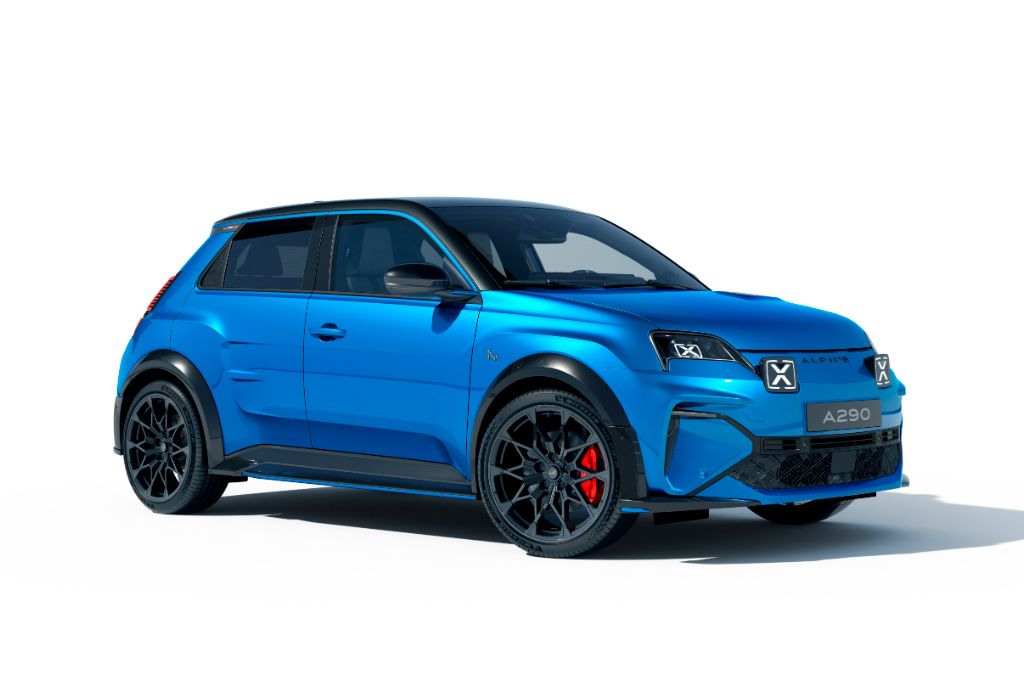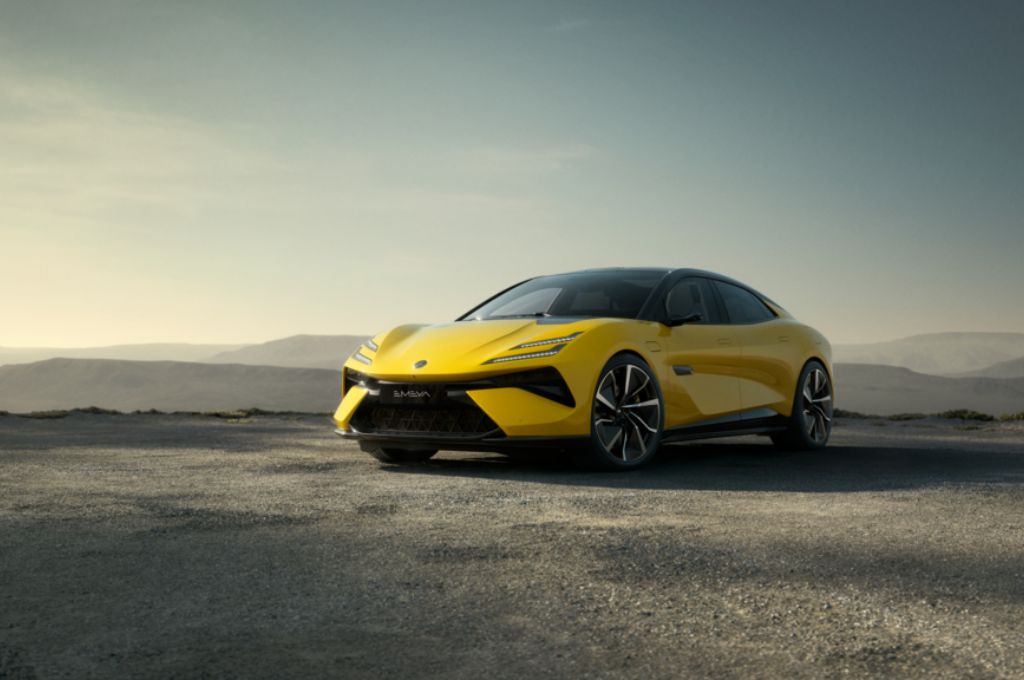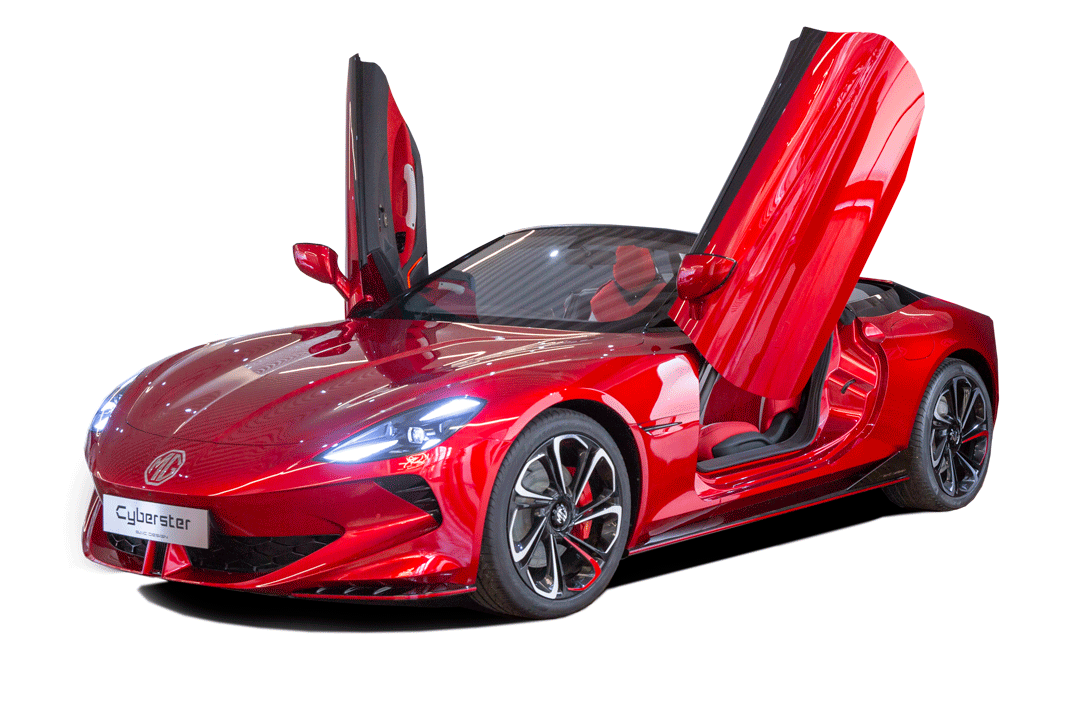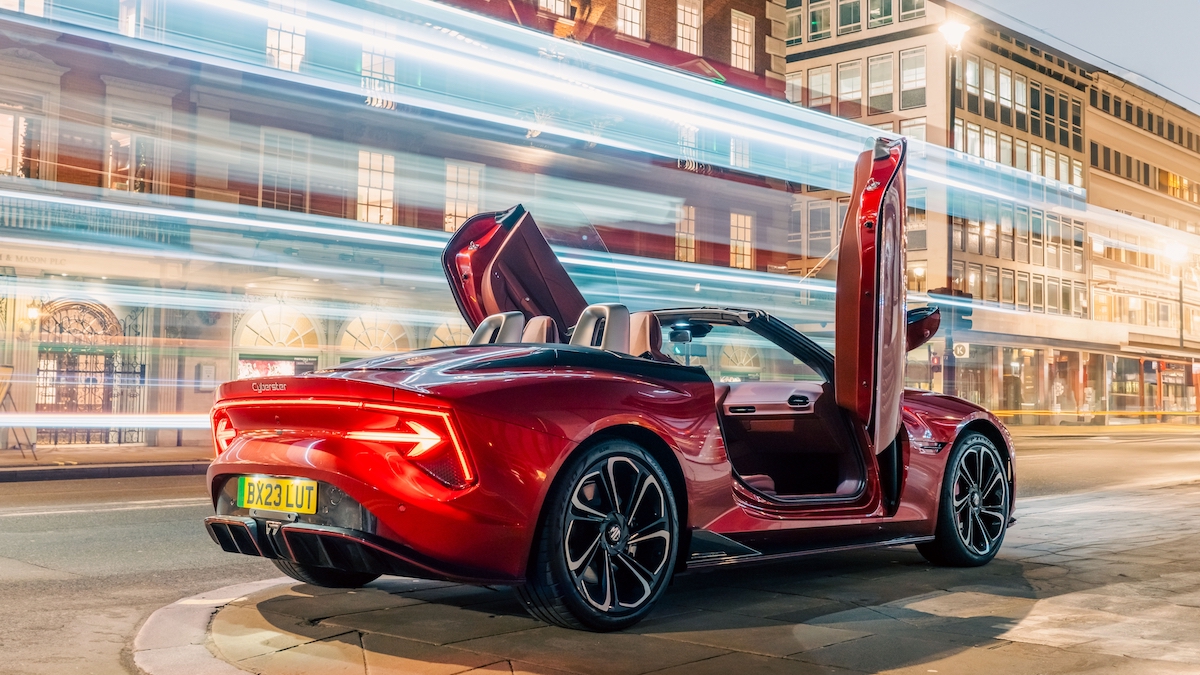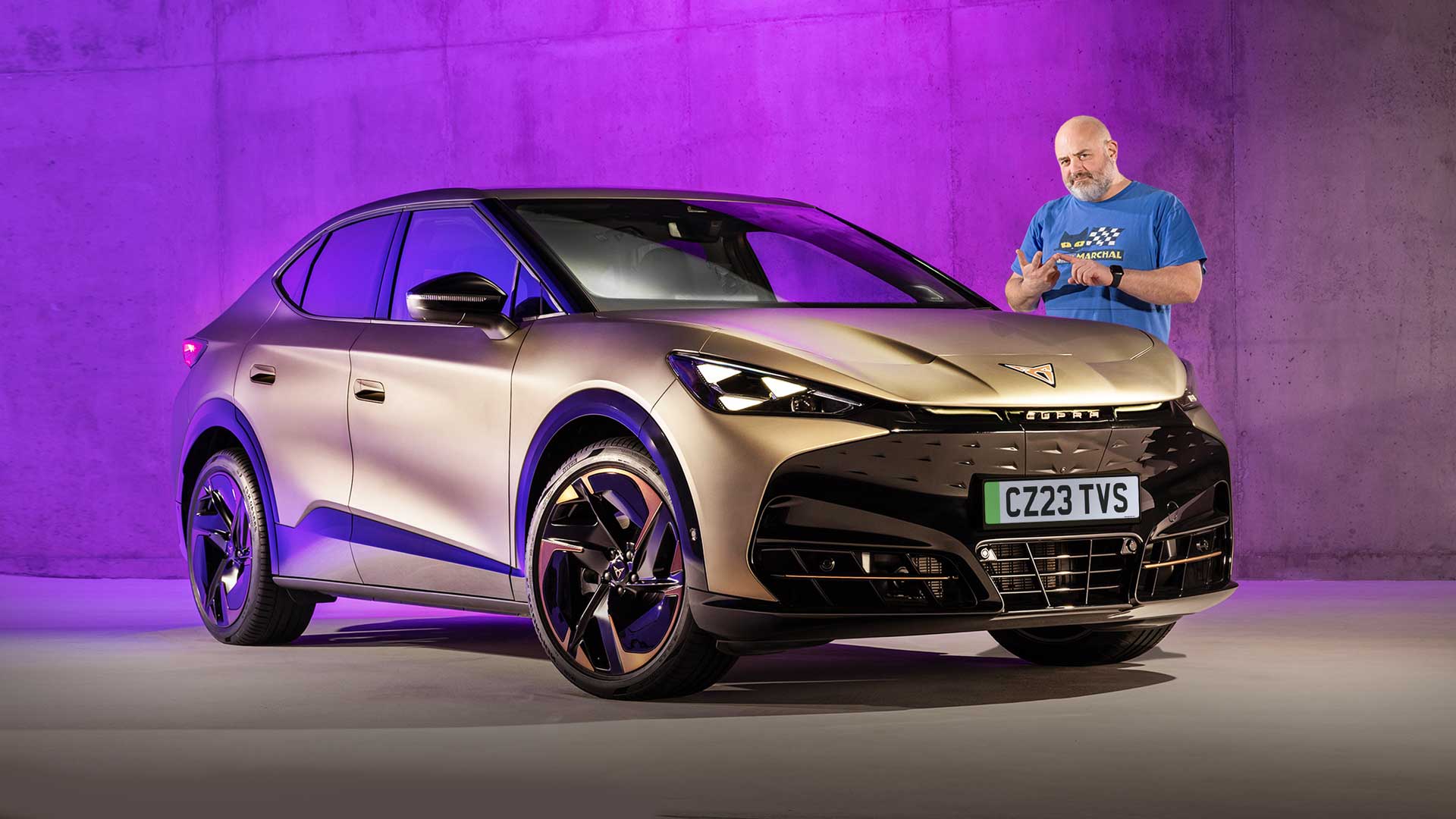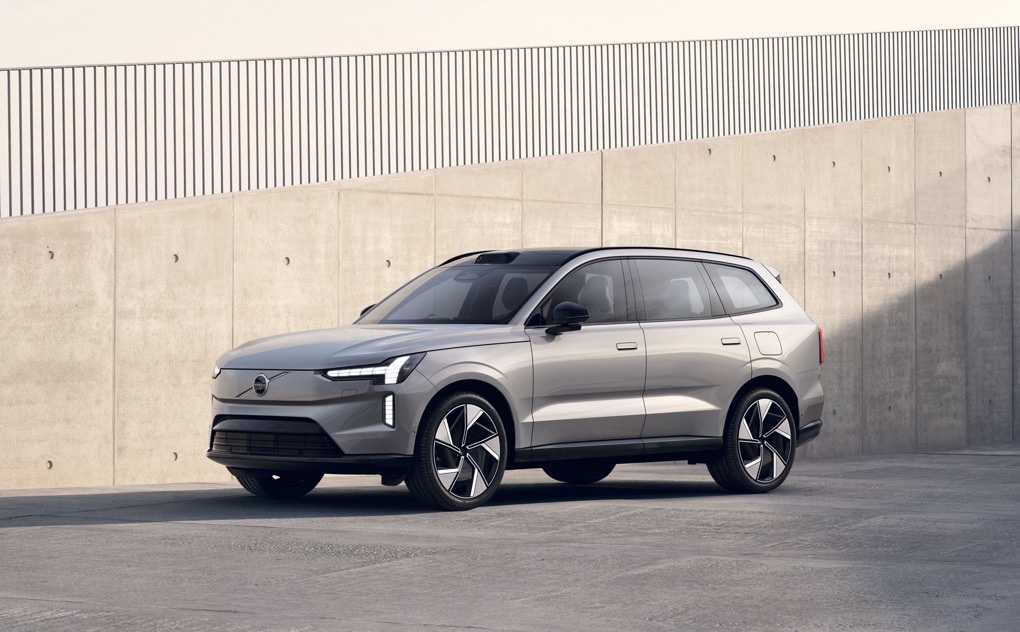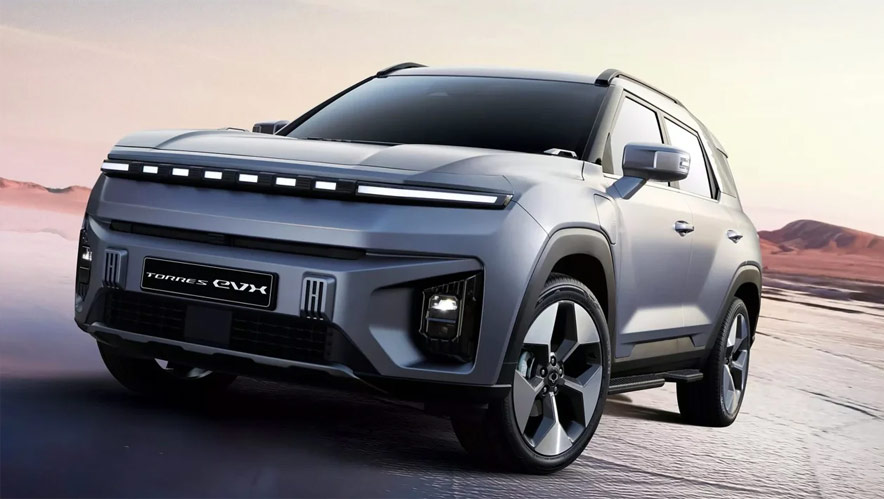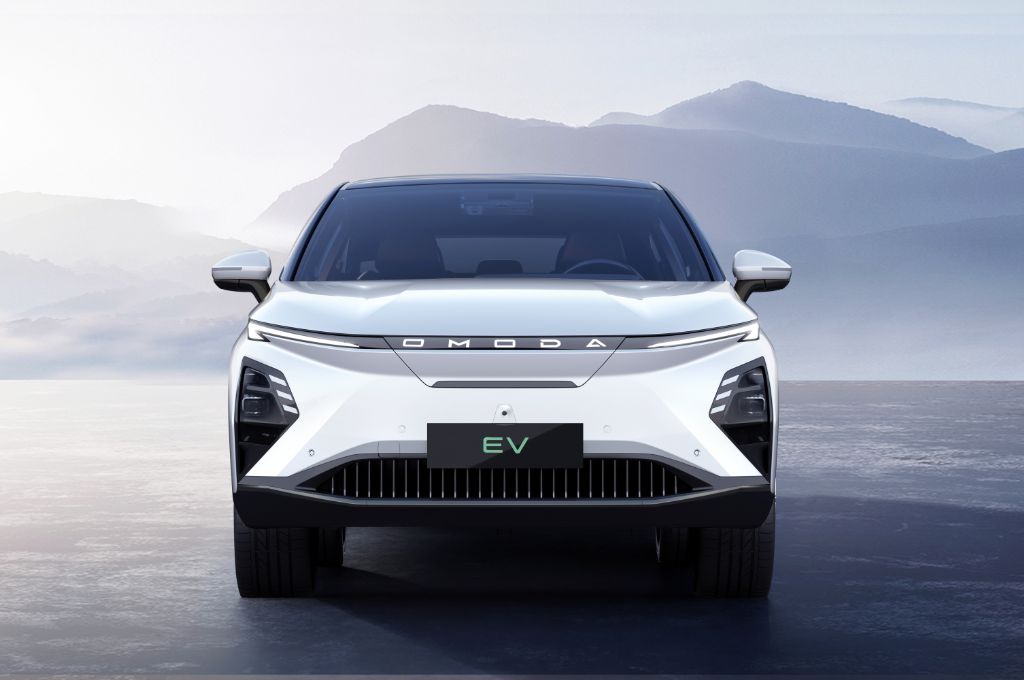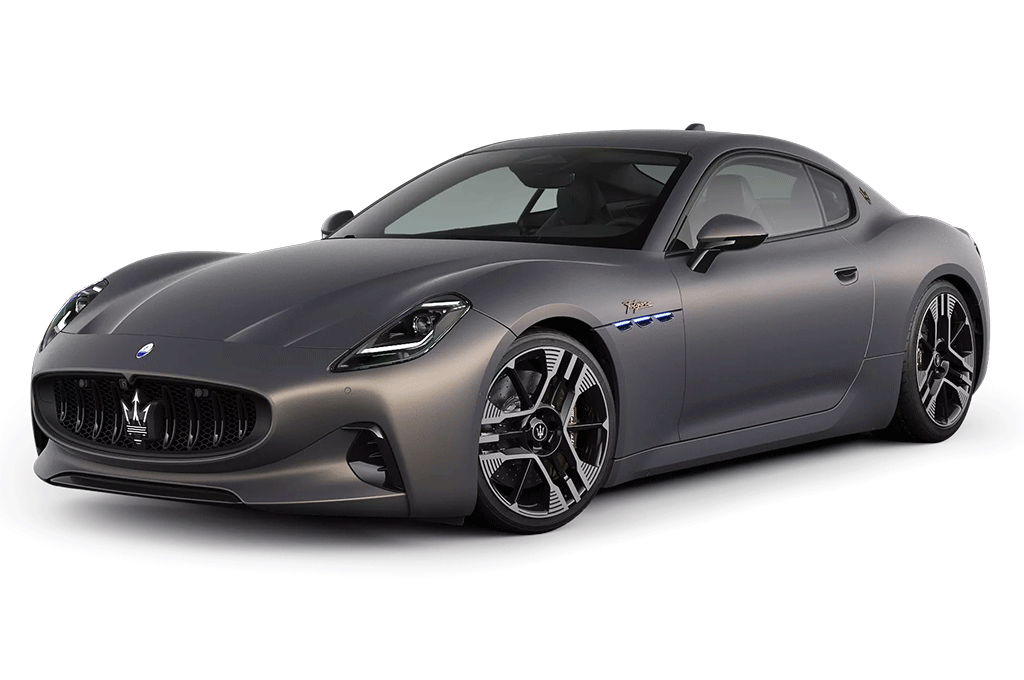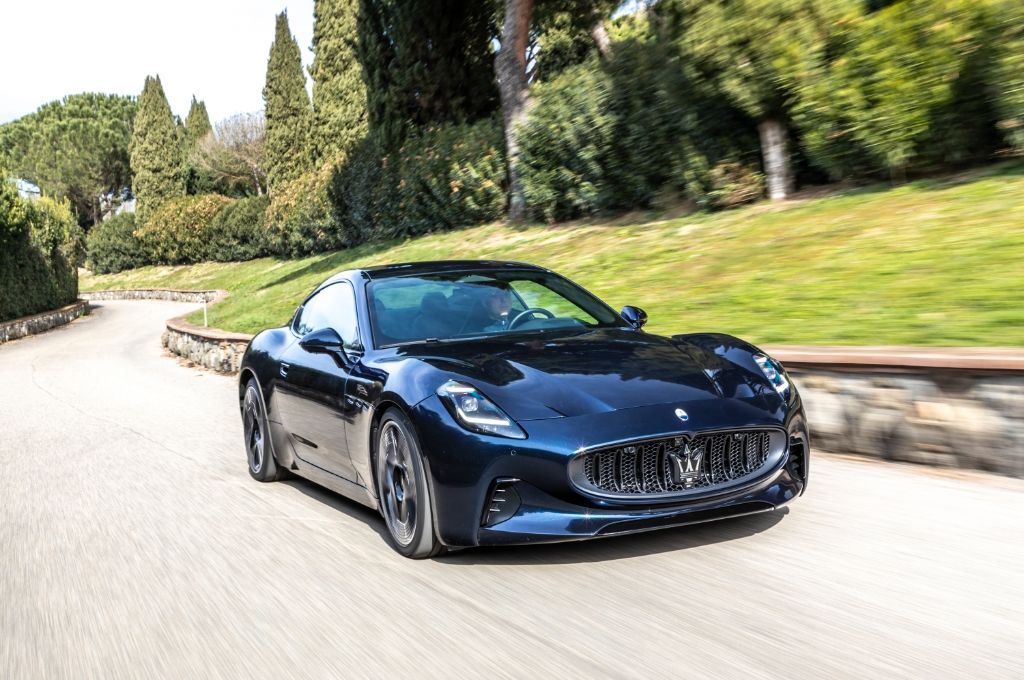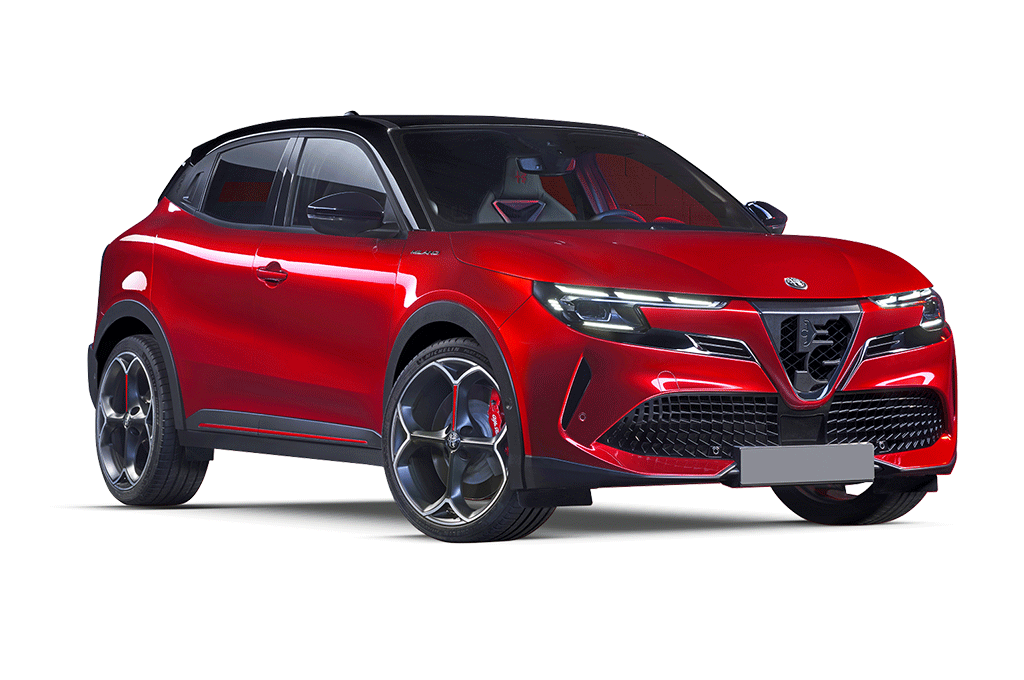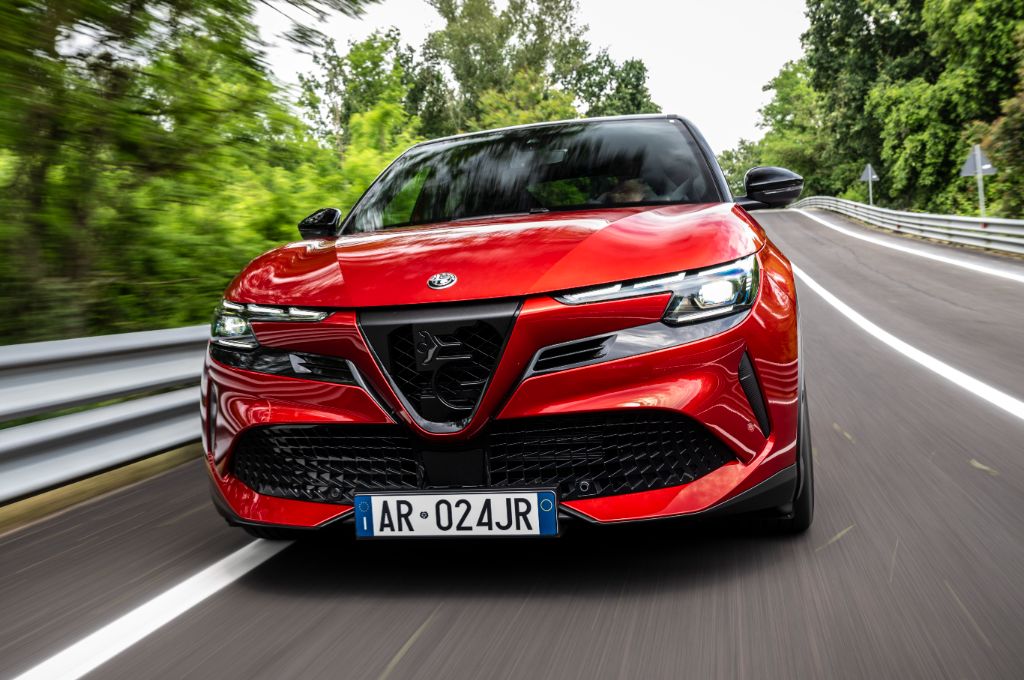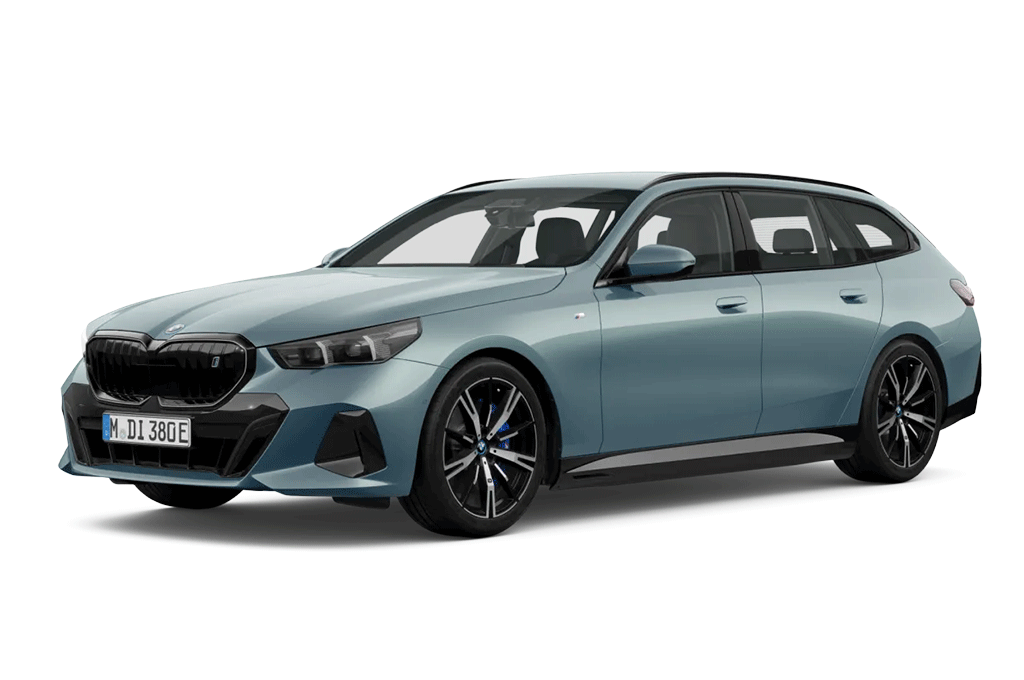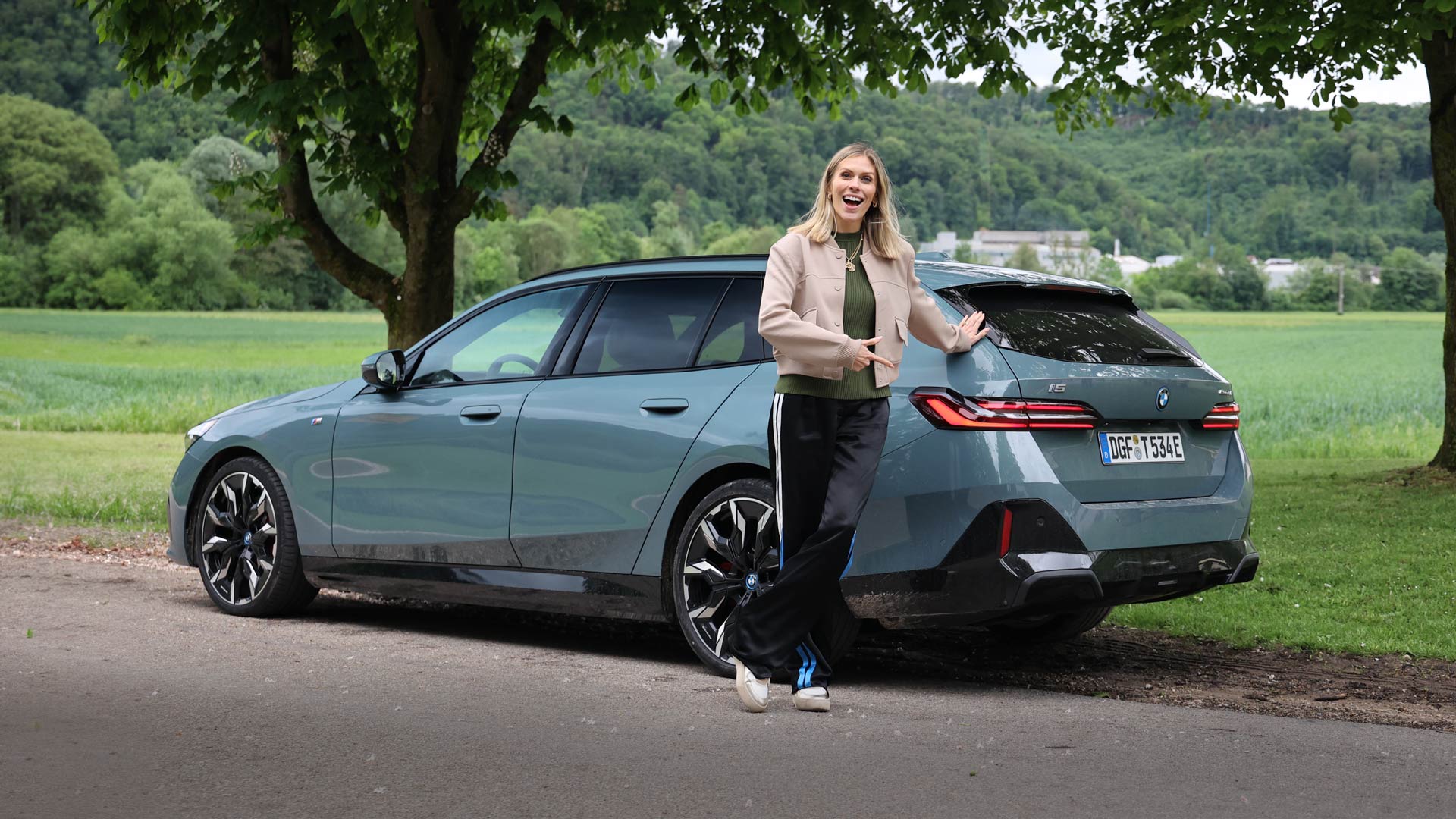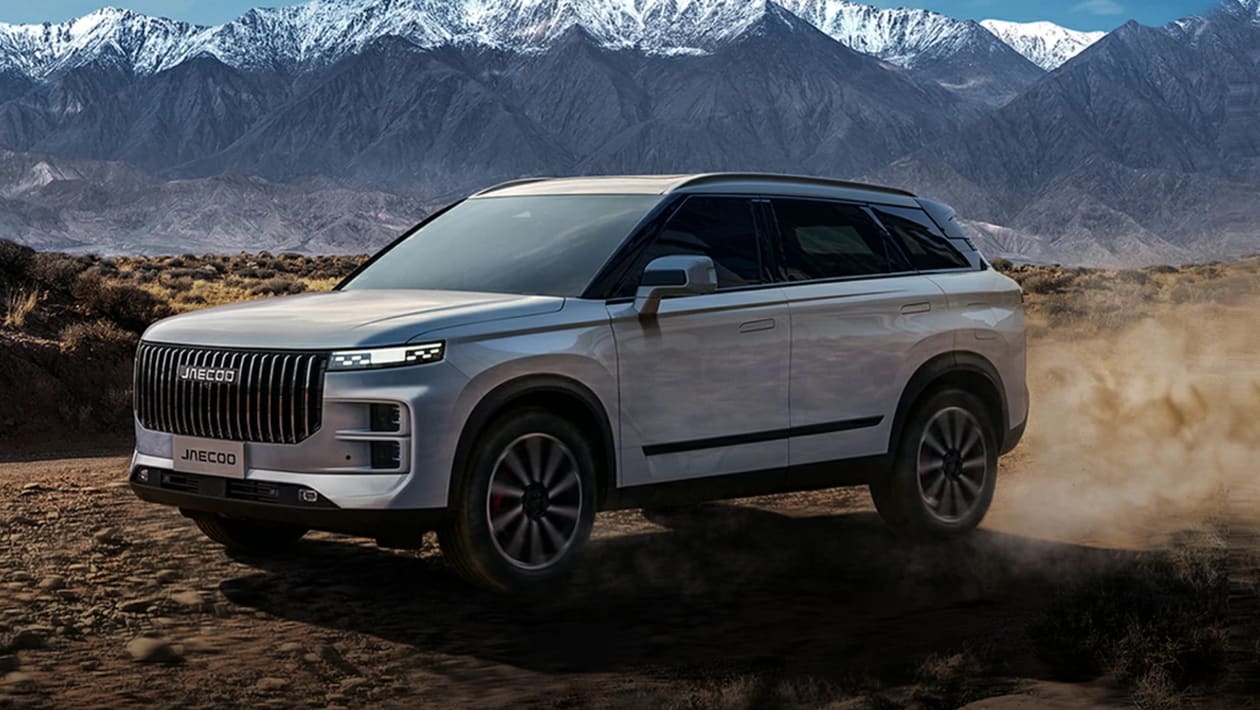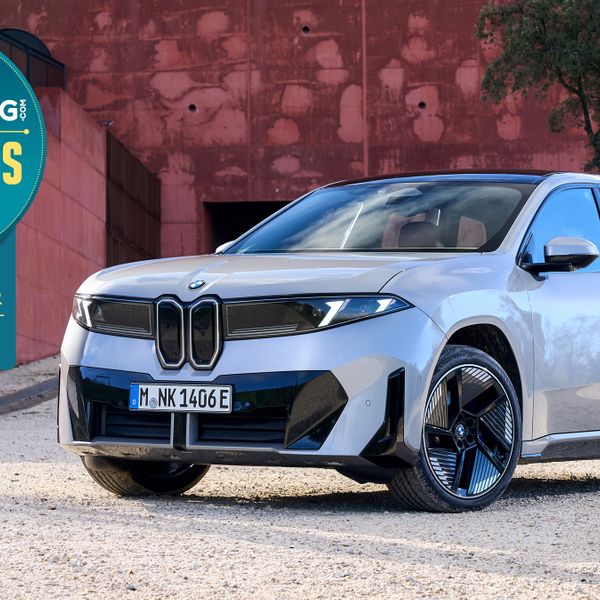Kia EV5
Price: £43,000 - £55,000 (est)
WLTP range: 275-330 miles (est)
Launch date: mid 2024
If the vast Kia EV9 is just too big for your needs, but the Kia EV3 (also arriving this year) is too small, how about the Kia EV5? The 4.6m long Kia EV5 uses the company’s dedicated EV platform, called E-GMP, which is also used in the EV6 and Hyundai Ioniq 5 and 6.
The standard model, equipped with a 64kWh battery pack and a 215bhp motor, is expected to have a driving range of around 330 miles per charge. The long-range model, featuring an 88kWh battery, is expected to reach 450 miles per charge.
Ford Capri
Price: £42,075 - £52,075
WLTP range: 250 -389 miles
Launch date: Summer 2024
Ford has finally revealed its long-awaited successor to the Capri. Predictably, it's called the Ford Capri, and while it wears a historic model name it's very much a new take on the family sports car recipe. The Capri is now an electric coupe-SUV, complete with a couple of different battery options and a range of between 250- and 389 miles. It is, basically, a swoopier and more sporty-looking version of the Ford Explorer family SUV - which we've already driven, and which will be arriving showrooms later this summer, while the Capri will follow it with orders opening this year and deliveries early 2025.
It'll be positioned against models such as the VW ID.5 and Kia EV6. We reckon that the Capri will drive well, if the Explorer is anything to go by, but we're still a bit unsure that it's got the 'wow factor' that many will be expecting given the Capri heritage. Check out Ginny's video to have a full look around, and leave us a comment to let us know what you think. Hopefully it will be worth the wait.
Smart #3
Price: £32,950-£39,950
WLTP range: 283 miles
Launch date: Summer 2024
The Smart brand has spent over 20 years making dinky city cars, so the recently arrived #1 and the incoming #3 are a bit of a culture shock. The first is already on sale and is a five-door family vehicle that’s a similar size to a VW ID.3, while the new #3 is an even bigger car and is just arriving in showrooms this summer.
Set to compete with the Volvo EX30 and Peugeot E-2008, the #3 is 4.4 metres long and shares much of its interior and exterior looks with the #1. It also gets the same 66kWh battery, which is good for between 270 and 283 miles of range depending on the trim level. 150kW charging allows for a 10-80% top-up in less than 30 minutes.
BYD Seal U
Price: £40,000 - £46,000 (est)
WLTP range: 261-311 miles
Launch date: Mid-2024
Things are happening fast at BYD. It's true that the Chinese brand only announced its European launch in 2022, and did not even start selling in the UK until the summer of 2023 with the Atto 3. But that's been very swiftly followed with the Dolphin and the Seal, and from this summer they’ll be joined by the Seal U, which competes against models such as the VW ID.4, Skoda Enyaq, Ford Explorer and Nissan Ariya with estimated prices starting at around £40,000.
Polestar 3 and 4
Price: £75,900- £85,500
WLTP range: 347-379 miles
Launch date: Q2 2024
Polestar is having a busy year in 2024 with the arrival of two new models to join the recently updated Polestar 2.
First off is the Polestar 3. This large SUV gets an all-wheel-drive powertrain and a 107kWh battery pack (usable) as standard, which, according to Polestar, can deliver a driving range of up to 379 miles on the WLTP cycle. Polestar sees the 3 as a car that will tempt buyers away from luxury combustion-engined SUV such as the Range Rover Sport, BMW X7 and Porsche Cayenne. When framed like this (all these cars are £75k+), the Polestar’s starting price makes more sense.
We rather like the Polestar 3, too. Our drive out in Madrid showed that it's cushy and pleasant to drive, and rather lavish inside. You could even argue that the amount of standard kit it gets makes it good value next to some rivals, but you can find out more about that right here.
If the 3 doesn't take your fancy, there's always the controversial Polestar 4, too. Smaller than the 3, and with no rear windscreen, it's a rather brave attempt to steal sales from the likes of the Porsche Macan and Tesla Model Y. We've driven it, but it may be something of an acquired taste...
Citroen e-C3 and e-C3 Aircross
Price: £21,000
WLTP range: 199 miles
Launch date: Q2 2024
We love the bold attitude that Citroen’s shown with original cars like the Ami and the Oli concept. And now we love them just a little bit more, because of this – the new e-C3. It starts from just under £22,000 and gets a 111bhp electric motor at the front along with a 44kWh battery pack, for a WLTP range of 199 miles. A smaller battery e-C3 will arrive in 2025 with a range of 124 miles, and will cost under £20,000 - making it almost cheap enough to rival the Dacia Spring as an affordable, electric runaround.
It's a smart, sensibly-priced and practical small family car that will enable lots more motorists to buy a new electric car. We even like the way it drives, so this seems like a real winner from Citroen.
If you like the look of this but just want a bit more space and versatility, there's always the Citroen e-C3 Aircross or Vauxhall Frontera, which use the same platform and powertrains in a bigger, roomier SUV body - and with prices starting from around £25,000.
MINI Cooper and Countryman
Price: £30,000-£34,500
WLTP range: 190-250 miles
Launch date: Spring 2024
The electric MINI hatchback was one of the most fun electric cars that you can buy but always suffered from an inconveniently short range, so the Electrifying team had big expectations when we heard that an all-new one was due for 2024, with a much more useful range of 190- to 250 miles. It's good, then, that it didn't disappoint when we drove it recently. It's still great fun, has loads of brilliant tech and is cheeky and cheerful - just as it should be.
It's still only a three-door, though, and there are loads of MINI aficionados who may want a more practical car for their family motoring needs. And MINI has stepped up to that audience, too, with the new electric MINI Countryman. The five-door crossover SUV grows in size, gaining 60mm in height and 130mm in length, so it's now roomier inside - if (predictably) also more expensive!
The 2024 MINI Countryman features a completely new powertrain and is available in two variants which mirror the Cooper’s - E and SE. The Countryman E will cost £41,500 and uses a 64.7kWh battery which provides up to 287 miles of electric range. It uses a 201bhp motor propelling it from 0-62mph in 8.6 seconds. We love the way it looks, and the fact that it still feels unmistakably like a MINI, while also being a decent family car. Check out the full review and drive video.
Peugeot E-3008 and E-5008
Price: £45,850 - £49,650
WLTP range: 326-435 miles
Launch date: Summer 2024
Peugeot has already started its assault on the electric car world with the E-208 and E-308 hatchback and estate, and from early 2024 families after a five-seat SUV with a bit more space will also have the new E-3008 to consider. Or - finally! - there will be an option for family motorists after a spacious, versatile seven-seat electric SUV, with the new Peugeot E-5008.
The E-3008 'fastback' SUV is on sale now, with three battery and motor combinations in the pipeline. Later in the year we’ll see the 227bhp long-range version capable of up to 435 miles thanks to a 98kWh battery, but we've driven the 207bhp, front-wheel drive model that you can order now, and which gets a range of 326 miles. Peugeot is also set to add a four-wheel-drive version with 316bhp and a range of 326 miles at a later date.
The E-5008 shares quite a lot of styling cues, not to mention the platform, powertrain and batteries from the E-3008, which means that it'll cost from around £48,000 with a WLTP range of 311 miles (or the 410 mile Long Range car will be more like £55,000). Maybe it's just the fact that the E-5008 brings seven-seat usefulness to the electric car class, without costing as much as the Mercedes EQB or Kia EV9, but we much prefer the sensible, big, roomy E-5008 to the sportier, somehow more disappointing E-3008. The 5008 just makes so much sense! Check out the full video reviews of the E-3008 and the E-5008, and let us know which one you prefer.
Porsche Macan
Price: £69,800
WLTP range: 381 miles
Launch date: Summer 2024
Porsche may seem an unlikely torchbearer for the electric car revolution, but with the brilliant Taycan, the German giant has already established itself as a maker of the finest electric cars in the world. Now, Porsche is turning its attention to the big-selling SUVs, including the Cayenne and the Macan. huge plans to electrify its range.
The Macan SUV is Porsche’s second fully electric car, and we drove it out on the international launch - safe to say that it's just as good to drive as you'd hope! Check out Nicki's video for more on that, or read the review here. It's going to be a big seller when it finally reaches showrooms towards the end of 2024.
Renault 5
Price: £25,000+ (est)
WLTP range: 186 - 248 miles
Launch date: Q4 2024
Renault is reimagining the iconic Renault 5 for 2024, and it looks absolutely spectacular. We get excited about new electric cars all the time, at Electrifying, but this one has really got us buzzing. It looks absolutely brilliant, it's expected to cost from around £25,000, and it'll have a range of 186- to 248 miles depending on which of the two batteries you go for.
Renault seems to be on a bit of a roll for 2024, anyway - with the new Renault Scenic family SUV being named European Car of the Year, for a start, and now with the Renault 5 around the corner. If the French brand can bring value and lovability to this brilliant-looking little car, it's going to be a huge hit. Ginny went out to have a proper look around. Baguettes at the ready...
Audi A6 e-tron & Q6 e-tron
Price: From £63,000
WLTP range: 435 miles (est)
Launch date: Summer 2024
These days every other Audi you see is a jacked-up sports utility, but the company used to be best known for its swish saloons like the A6. It hasn’t given up on them, hence the incoming, latest generation A6, which will have an e-tron electric version in saloon and estate guises to take on the new BMW i5 and i5 Touring.
Before the sleek saloon and estate arrive, however, we will have another SUV, in the shape of the Q6 e-tron. Predictably, this fits between the smaller Q4 e-tron and larger Q8 e-tron and is closely related to the electric Porsche Macan. We've already been out to drive the Q6 e-tron, which costs from just under £63,000 and has a range of up to 381-miles. And, d'you know what? It's absolutely great. It feels more than one generation on from the Q4 e-tron and the original Audi e-tron, and we're not sure why you'd buy the bigger Q8 e-tron over the marginally smaller Q6, either. After all, the Q6 has better, more modern tech, is better to drive and is, well, just better! You want to see what the next era of Audi electric cars will be like - including the forthcoming A6? The Q6 e-tron shows you exactly what to expect, and it's very good indeed.
Fiat Grande Panda
Price: £22,000 (est)
WLTP range: 199 miles
Launch date: Summer 2024
Fiat has finally revealed its new Panda - and it's set to get a bit bigger, and even more lovable. This small electric car is about the same size as the Citroen e-C3, which is no surprise as they share a platform, battery pack and powertrains. Mind you, the Fiat has lots of Italian design flair, including a nod to the Italian brand's historic Lingotto test track, so do check out Nicola's video review to have a proper look around this charismatic little Fiat. While we'll get to drive the Panda before the end of 2024, deliveries won't be until the beginning of 2025, so there's a bit of a wait yet if you're hoping to get your hands on one.
This all new car will be the first of a family of Pandas, too (which is weird as any zoologist will tell you it’s notoriously hard to breed them). These will include a bigger SUV, a coupe, and a mini-MPV. There will be a city car too, which will be the size you’d expect a Panda to be.
Hyundai INSTER
Price: £22,000 - £28,000
WLTP range: 160 - 220 miles
Launch date: Winter 2024
How cool is this thing?! The new Hyundai INSTER is based on an existing Hyundai small city car - the Casper. The Casper is currently only sold in Korea (in our opinion, Casper would have been a better name to stick with), which is also where it’s built as part of a joint venture with one of the local manufacturers. And that’s what allows Hyundai to reduce costs. Speaking of which, Hyundai hasn’t confirmed pricing, yet, but the INSTER is expected to cost from around £22,000 - a similar amount to its arch nemesis, the Citroen e-C3. It's not going to be fast, mind… The 95bhp, 42kWh INSTER will take 11.7sec to get to 62mph. The 49kWh car gets a whopping 113bhp, for a slightly less embarrassing 0-62mph time of 10.6 seconds, while range is expected to be between 160- and 220 miles. It's a clever thing, though, the INSTER. The seats can all fold flat, and it's even got vehicle-to-load charging tech, so it's got some real big-car tech, despite the dinky size and budget price. It's one of the most exciting new cars of 2024, we reckon, so do have a look at our video because this might just be your next electric car...
Dacia Spring
Price: £14,995 - £16,995
WLTP range: 140 miles
Launch date: Summer 2024
The Dacia Spring is already on sale in Europe, where it’s the continent’s cheapest electric car (the Ami quadricycle doesn’t count). Now, British buyers will be able to get in on this affordable electric car action, with the Spring costing from £14,995, and stretching up to £16,995 for more powerful, better equipped versions.
The Spring’s specification reflects Dacia’s budget-conscious focus, so it has a relatively tiny 27kWh battery and a choice of either 45 or 65bhp motors. Charging maxes out at 30kW, meaning a full refill will take a while, but the good news is that we've driven it - and it's fun, and really efficient! The Dacia Spring arrives in UK dealerships in the next few months, and you can watch Nicola's full video review right here.
Alpine A290
Price: £35,000-£40,000 (est)
WLTP range: 236 miles
Launch date: Q4 2024
The Alpine A290 is set to be a sportier cousin to the more mainstream Renault 5, with the A290’s chassis tuned for a far more lively feel thanks to bespoke suspension, power and braking, to offer what Alpine says will be a true electric hot hatch. With a 52kWh battery, and range expected to be almost 240 miles, the A290 has better range than the Abarth 500e, and a very similar range to the Mini Electric. It’s also offered with a couple of powertrain options: the entry-level Alpine A290 GT gets 180bhp and 285nm of torque, while the GT Performance and GTS models get 220bhp and 300nm.
Alpine has also kept the weight of the A290 down to 1479kg, which helps this front-wheel drive hot hatch to hit 62mph in 6.4 seconds (7.4 seconds for the lower powered models). And, I mean... How good does this look?! Spectacular stuff. Consider us excited!
Lotus Emeya
Price: £101,950
WLTP range: 310 - 379 miles
Launch date: Q4 2024
Hot on the heels of Lotus’s first SUV - the Eletre - is its first hyper-GT. The new flagship four-door, four-seater will go into production in 2024 and become the British brand’s third electric model after the Eletre and Evija hypercar.
Designed to face off against the Porsche Taycan, the most potent versions will offer up to 905bhp and a 0-62mph time of just 2.8 seconds. Lotus insists it will deliver the kind of driving experience the brand is famous for - with adaptive air suspension and active aero - as well as housing a luxurious and high-tech interior finished in the latest sustainable materials.
Lotus is expected to use a 102kWh battery pack in the Emeya, while 350kW charging will allow a 10-80% recharge in as little as 18 minutes.
MG Cyberster and Cyber GT
Price: £54,995 to £59,995
WLTP range: 316 miles
Launch date: Summer 2024
Sticking with performance-focused electric cars, the MG Cyberster roadster has finally arrived, and we love it. It's on sale initially as a two-seat roadster, complete with a drop-top, but a hard-top coupe version is on the way later in 2024 and has the benefit of a 2+2 seating configuration. It's like a more affordable, electric Porsche 911! Or maybe the affordable sports-coupe that the Ford Capri should have been?
The Cyberster is offered in two versions. The ‘basic’ version is called the MG Cyberster Trophy, and is powered by a 335bhp electric motor, which powers the rear-wheels for a 0 to 62mph in 5.0 seconds. If that doesn’t sound sporting enough, the dual motor, all-wheel drive MG Cyberster GT gets 503bhp and will sprint to 62mpg in just 3.2 seconds.
Cupra Tavascan
Price: £47,300
WLTP range: 326-355 miles
Launch date: Q3 2024
The Tavascan is Cupra’s second all-electric model, after the slightly-warm Born hatchback, and is set to turn up the temperature for the Spanish brand. Based on the same MEB underpinnings as everything from the Born to the VW ID.5, the Tavascan is a large coupe-SUV preparing to challenge the Ford Mustang Mach-e, Nissan Ariya, Tesla Model Y and Audi Q4 e-tron at the higher end of the market.
Its sharp, sleek looks are certainly enough to get it noticed in that company and under the skin it will use dynamic chassis control and sports suspension to deliver on Cupra’s sporty ambitions.
Two versions will be available when it goes on sale in the second half of 2024 - a rear-wheel-drive one with 282bhp, and a four-wheel-drive VZ variant with 335bhp and a 0-62mph time of 5.6 seconds. We've driven it, and you can find out why Tom rated it so highly, right here.
Volvo EX90
Price: From £96,255
WLTP range: 363 miles
Launch date: Q3 2024
The Volvo EX90 is a massive, seven-seat electric car that's here to take on the Kia EV9 and electric Range Rover - although it's going to make the big Kia look like great value... When it arrives at the end of 2024, the EX90 will be the most expensive, most technologically advanced Volvo ever, featuring radars, cameras and LiDAR sensors to aid advanced driver assistance systems, and built-in 5G connectivity. With seven seats, it’s effectively an electric replacement for the XC90, and brings all the top-end creature comforts you’d expect for £100,000.
SsangYong Torres EVX
Price: From £44,995
WLTP range: 287 miles
Launch date: Summer 2024
Budget Korean brand SsangYong will make its second foray into the electric car world in early 2024 with the striking looking Torres EVX. The tough-looking family SUV is already on sale in the UK, and is powered by a 201bhp electric motor on the front wheels, with a 77kWh battery offering up to 287 miles of range.
It’s up against everything from the VW ID.4 and Skoda Enyaq to the Tesla Model Y and Toyota bZ4X, so it's got a lot of established competitors to fend off.
Chery Omoda 5
Price: £32,500 (est)
Battery range: 257 miles
Launch date: Summer 2024
Chery is a big brand in other parts of the world and it has ambitions to make a name for itself here in Europe too.
The Omoda 5 is its first effort - a family SUV that lines up against the Hyundai Kona, Kia Niro and Nissan Qashqai. Like the Kia and Hyundai, there are combustion engine versions of the Omoda 5, but there’s also an electric option that promises performance and range to match the Koreans - as well as similar space and equipment. Matching established models in these areas is one thing, but the Omoda is going to have to offer great value to persuade buyers away from Kia, Hyundai and others.
Maserati Granturismo Folgore & Grecale Folgore
Price: £190,000 (est)
Battery range: 280 miles
Launch date: Q4 2024
Once famous for its howling V6 engines, Maserati is embracing electrification with battery-powered versions of two of its models, both due in 2024.
We’ve already driven the GranTurismo Folgore and were blown away by both its straight line pace and its incredibly sharp handling, plus the way it looks and feels like a true Italian grand tourer. Three motors (one at the front, two at the rear) are good for 751bhp or 819bhp in brief overboost spells, meaning the Folgore will hit 62mph in just 2.7 seconds. A large 83kWh battery means range of 292 miles and 270kW rapid charging will get you back on the move quickly. You'll also be able to get the Folgore with a soft-top roof, for that full open-air supercar experience. Sure, a £200k sports car might not be high on many of our shopping lists but it’s exciting to see how established brands are embracing electric.
Also due out in 2024 is the electric version of Maserati’s latest SUV - the luxurious Grecale. With 557bhp and a 0-62mph time of around 4 seconds, the Folgore (the name that Maserati is giving all of its electric models) is the most powerful version of the Grecale, while its 105kWh battery should offer between 300- and 350-miles of range.
Alfa Romeo Junior
Price: £33,895 - £42,295
Battery range: 250 miles
Launch date: September 2024
Alfa Romeo has been slow to the electric car game, and its new compact SUV - the Alfa Junior - is its first all-electric offering. It sits on the same platform as the Jeep Avenger, which will also be one of its chief rivals - as another stylish 4.2-metre long small, urban SUV. Naturally, Alfa Romeo is focussing on making its little SUV a sporty offering, so you can have it with a 154bhp electric motor and 250 miles of range from the 51kWh battery, or you can go for the Alfa Romeo Junior Veloce. which is to the Junior what the GTi is to the VW Golf. With over 200bhp, bespoke suspension and even a mechanical diff', the Junior Veloce is seriously good fun - as you can see from Nicki's video. We'll just have to wait and see what the more everyday electric Alfa Junior models are like, but we'll see them in the UK before the end of 2024.
BMW iX2 and i5 Tourer
Price: £57,445
Battery range: 259 - 266 miles
Launch date: March 2024
The BMW iX2 joined the BMW line-up earlier in 2024, as a sleeker, sportier partner to the iX1 SUV. BMW describes it as a ‘Sports Activity Coupe’ and it shares its looks with the petrol X2; there’s even a light-up kidney grille for the real attention-seekers, as well as the same high-tech, high-quality interior features found in the impressive iX1. The iX2 is powered by two motors producing a combined 308bhp, while the 64.8kWh battery gives a range of up to 266 miles.
Mind you, if it's a family-oriented, electric BMW that you're after - might we suggest the new BMW i5 Touring? We love estates at Electrifying, and it's great to finally see a few more electric wagons arriving, to satisfy those of us who don't want an SUV. The i5 is a spectacular thing, too. Prices start at just under £70,000, while the range is up to 342 miles. It's not cheap, then, but it is huge inside, lavishly equipped with hi-tech kit, and it's a joy to drive and live with - as Nicki found out, in her video.
JAECOO O7
Price: £43,000 (est)
Battery range: 250 miles (est)
Launch date: late 2024
JAECOO is a sister brand to Omoda, and both are Chinese marques owned by car-making giant, Chery. JAECOO is coming to the UK before the end of 2024 with the JAECOO 7, which is an SUV that's a touch larger than a Nissan Qashqai. We'll see hybrid versions first, but the fully electric will follow soon after, and is expected to rival the likes of the VW ID.4 for size, capability and price.
And the rest!
So, there you have it. All of the new cars coming in 2024. Except it kind of isn't, because there are loads of derivatives and new variants coming, too. How about the long-wheelbase VW ID. Buzz, and the sporty, VW ID.7 GTX? Or there's always the updated Skoda Enyaq, MY24 Porsche Taycan, Toyota bZ4X, Hyundai Ioniq 5 and 5 N?
It's been a bumper year so far for new electric cars - and some dramatically improved models, too. Keep an eye on Electrifying.com, and we'll keep you up-to-date with all the latest electric car news and reviews, and if you love the vid then don't forget to subscribe to the YouTube channel.







 EV5_EXT2.png)
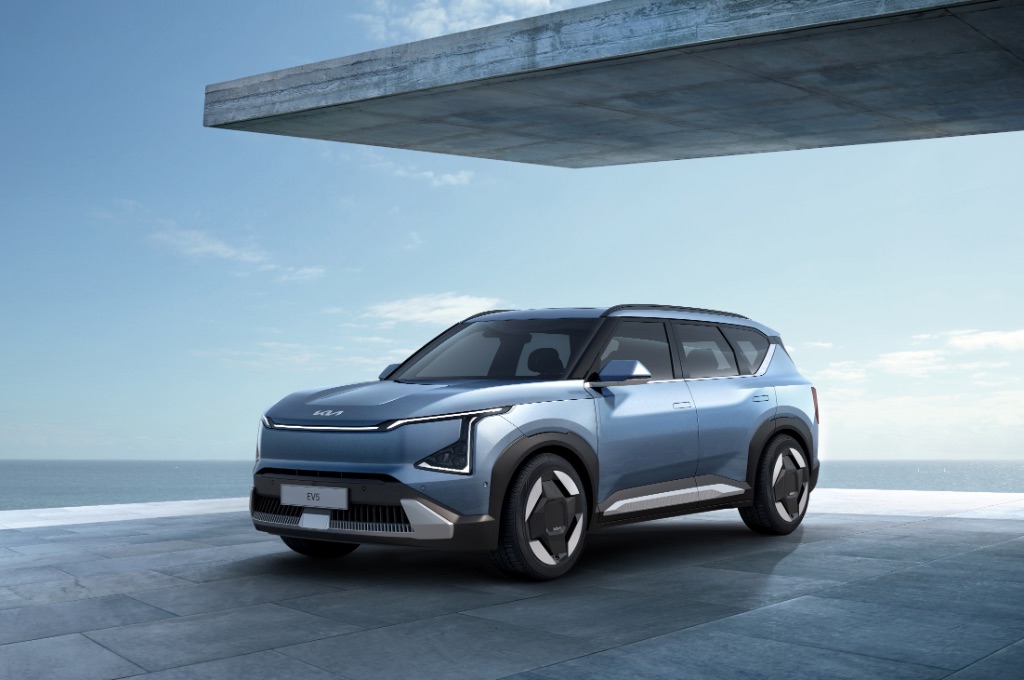%20EV5_EXT3.jpg)
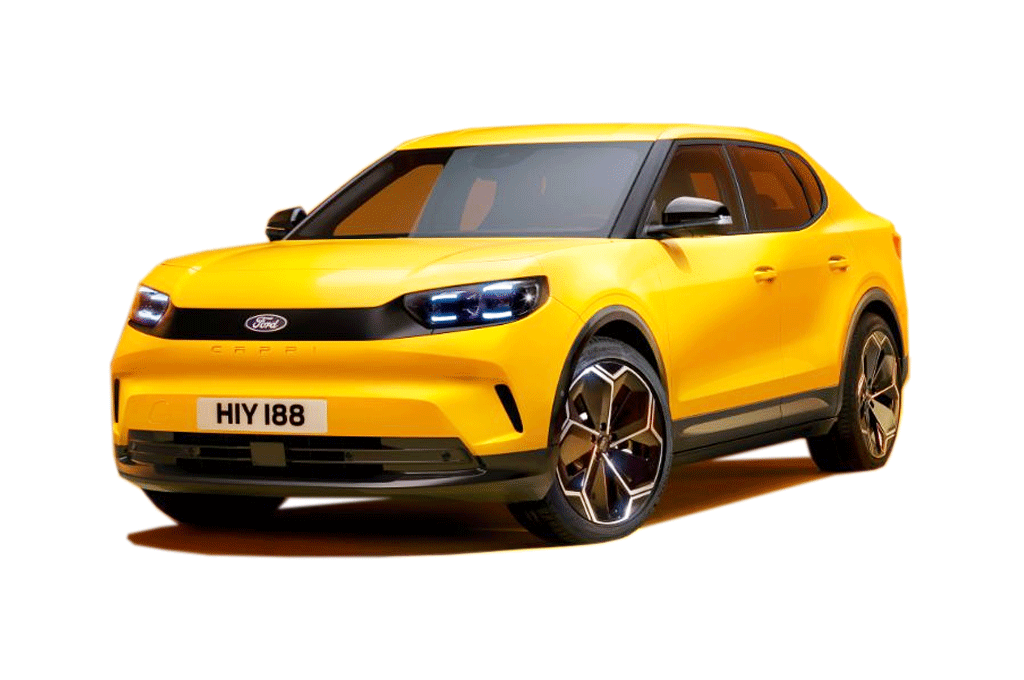
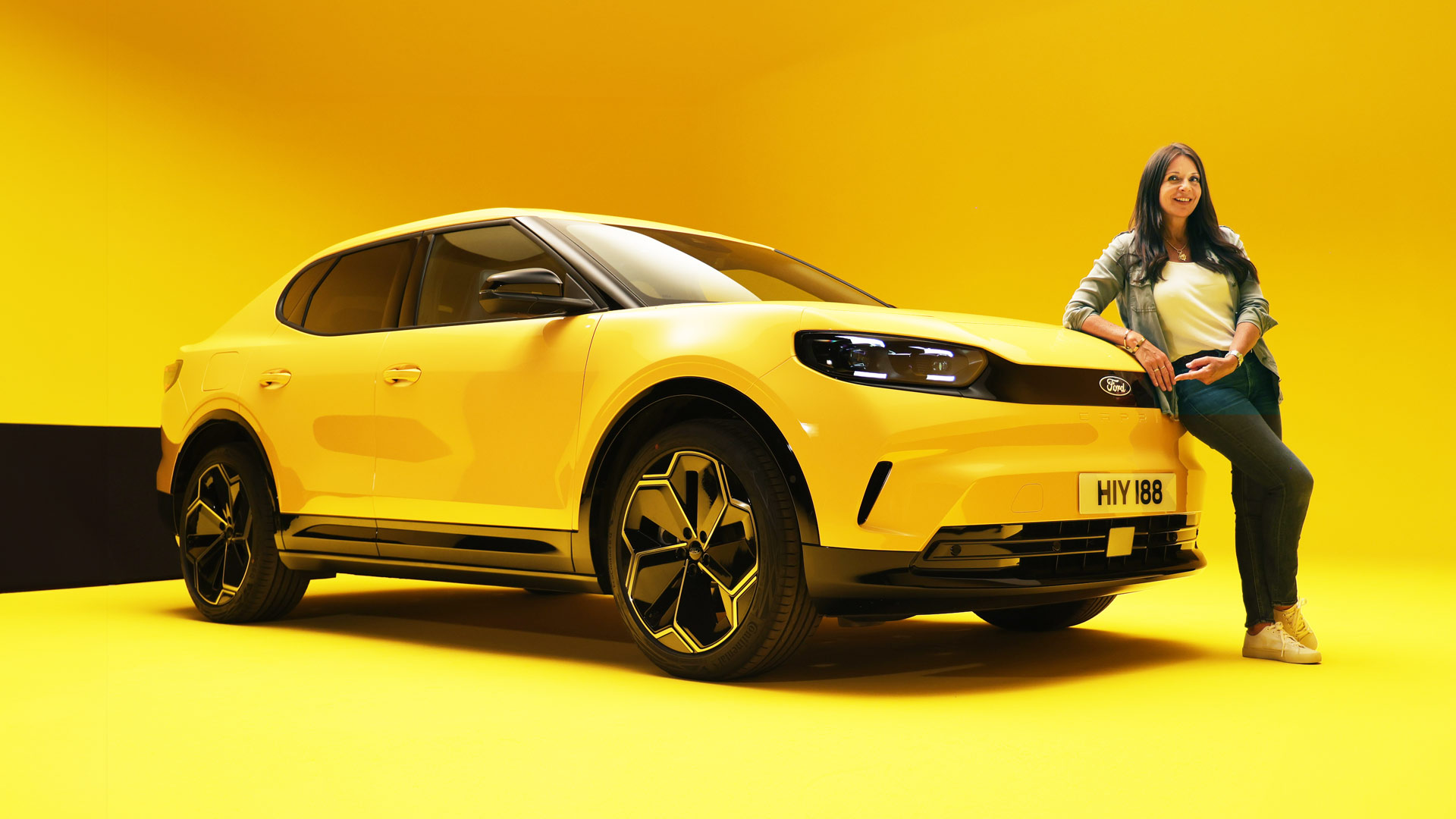
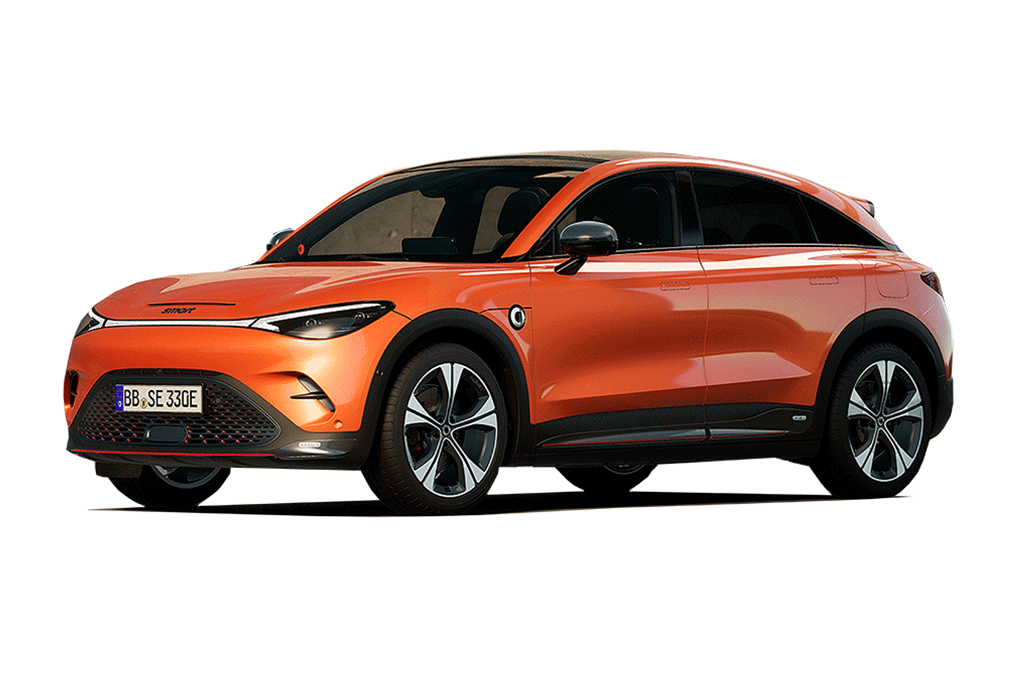

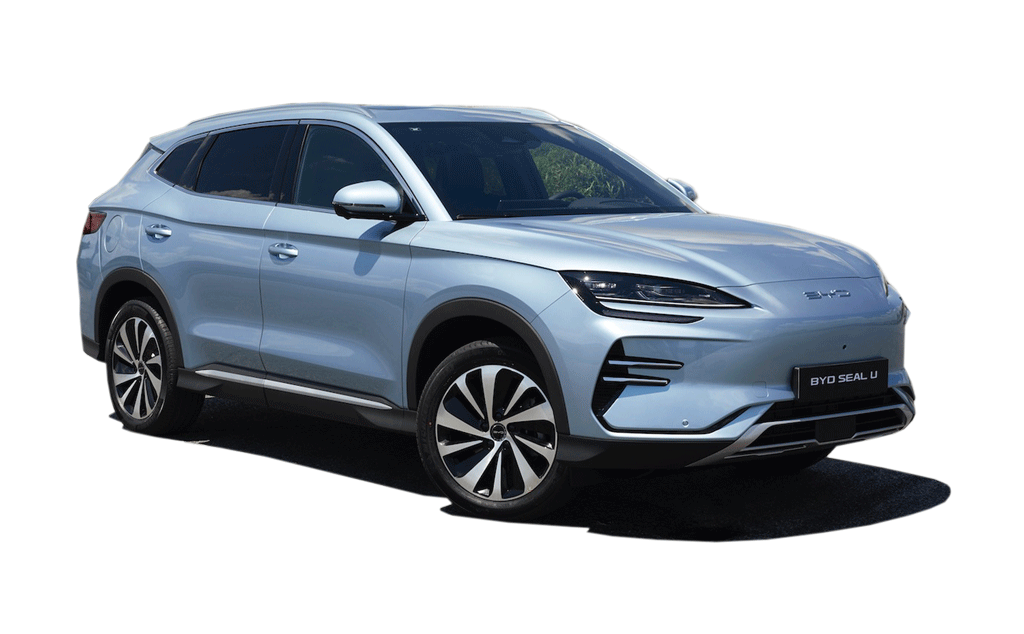
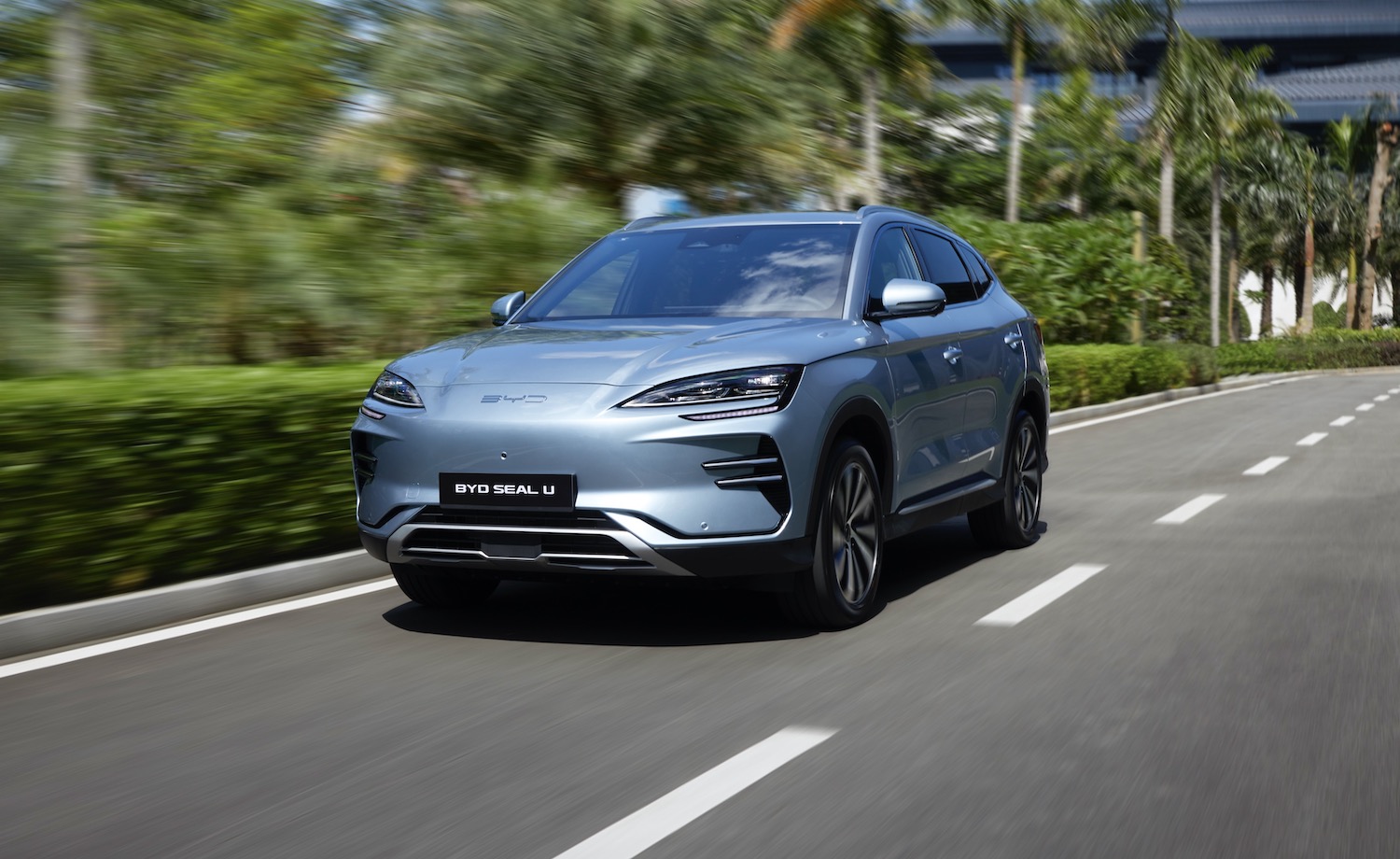
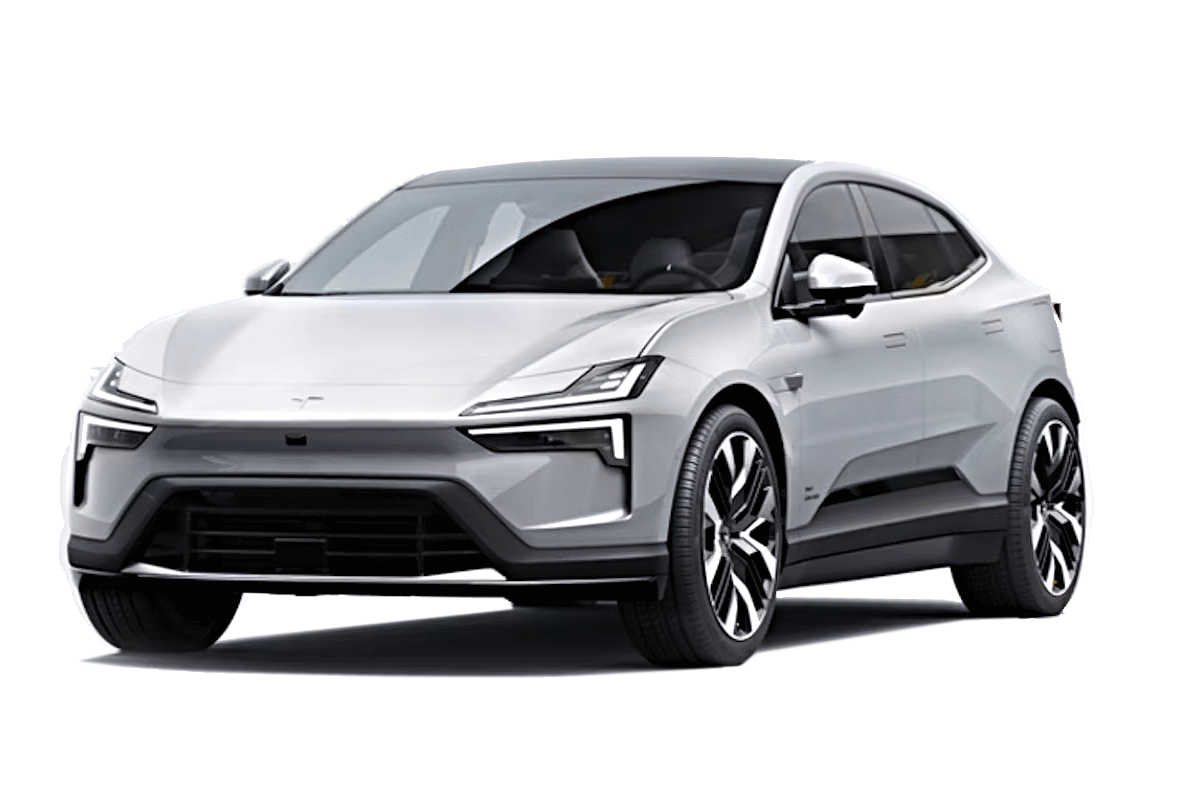
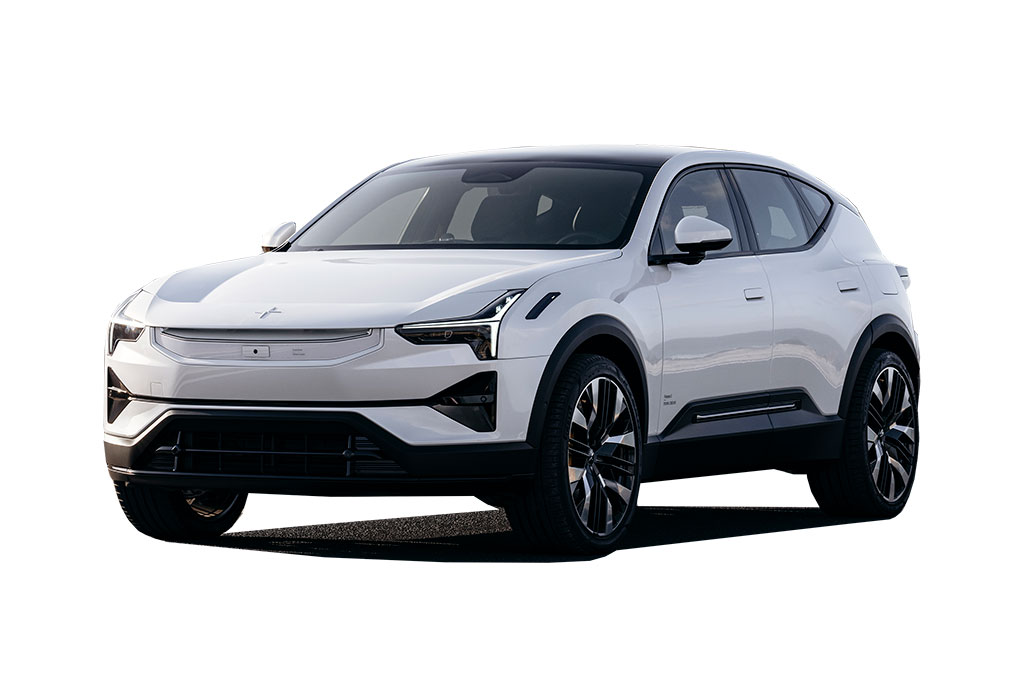
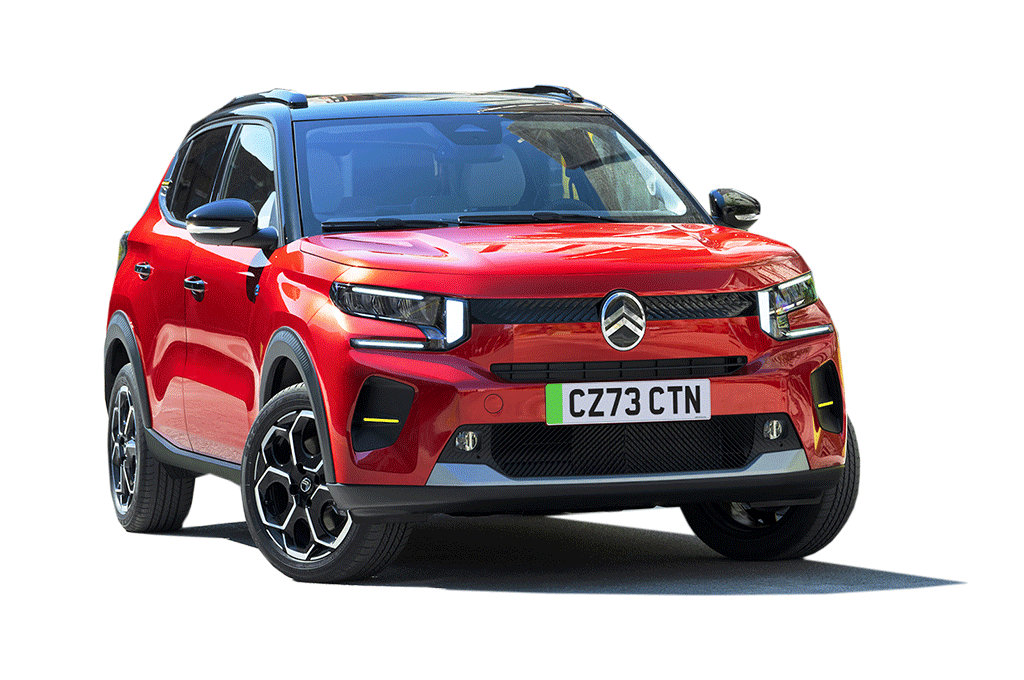
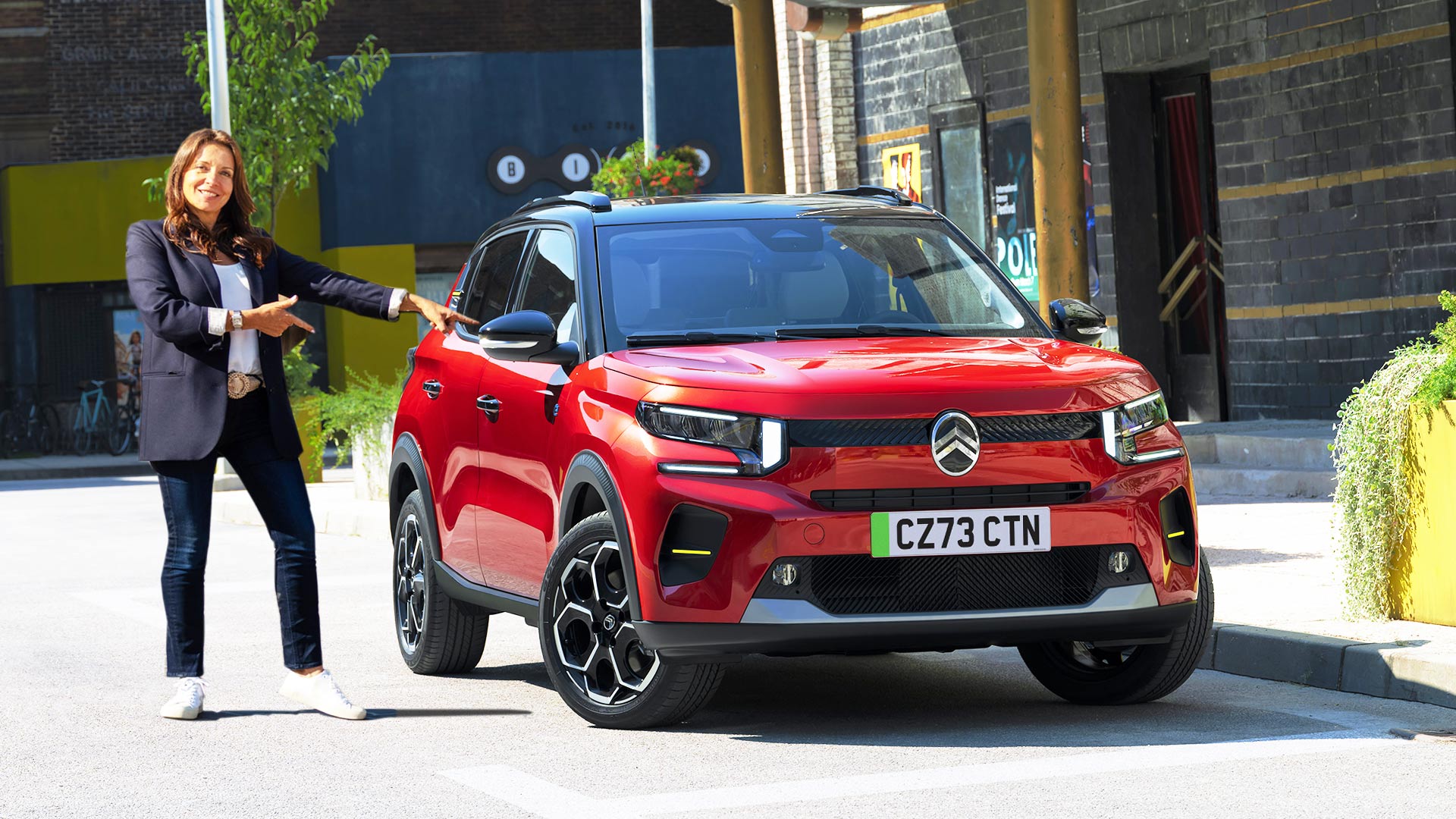


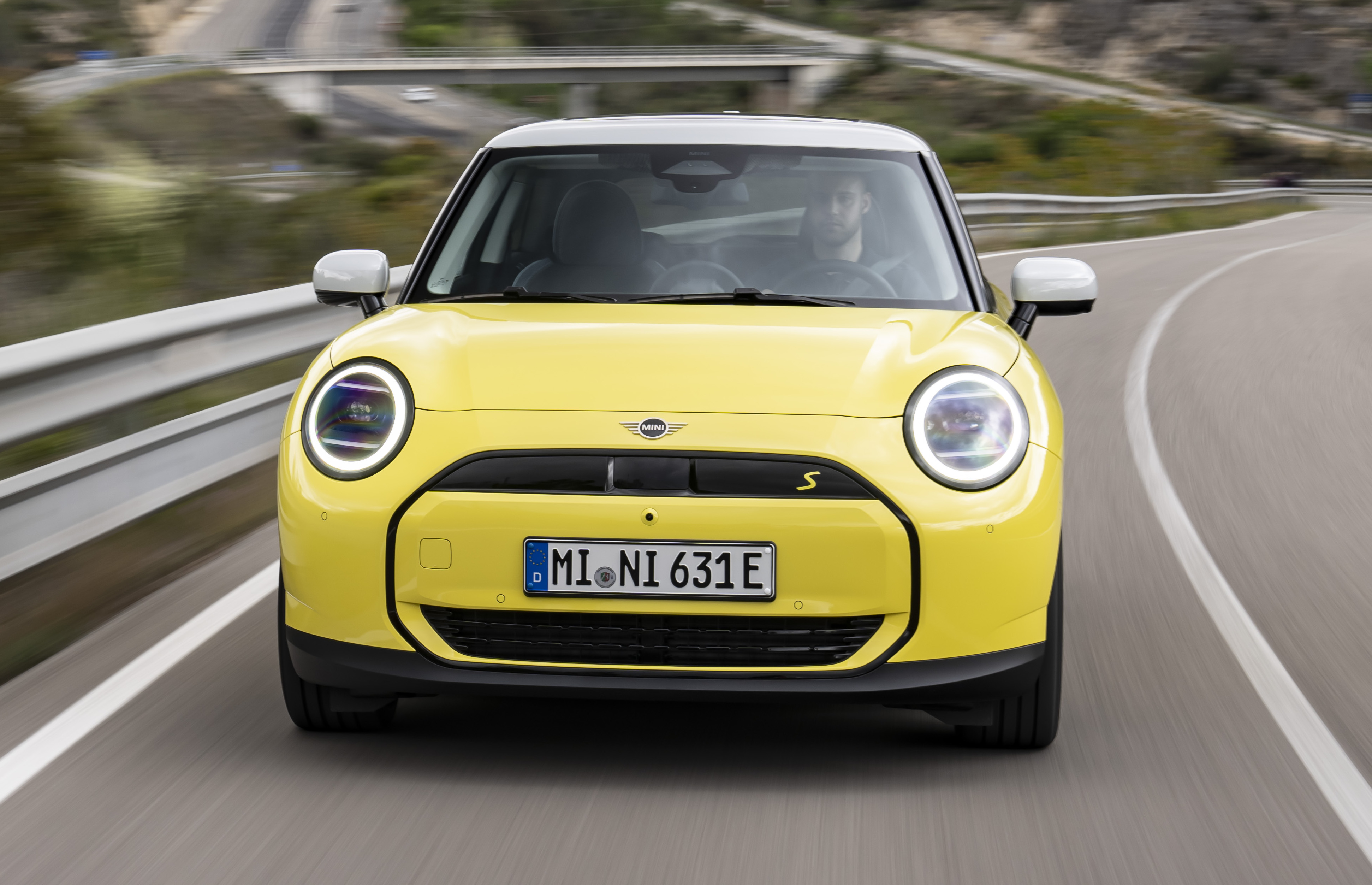
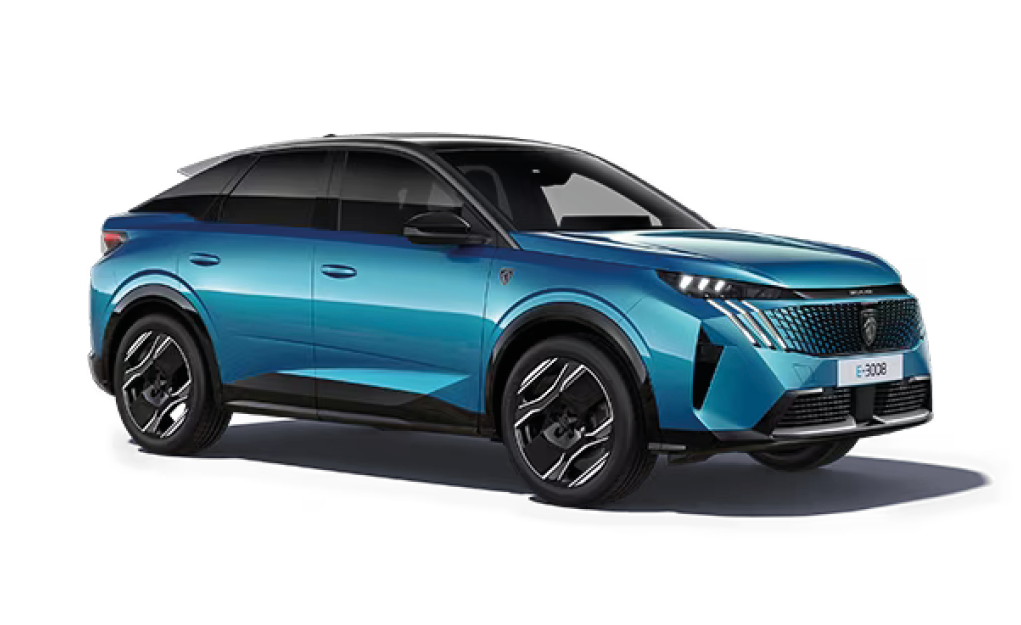
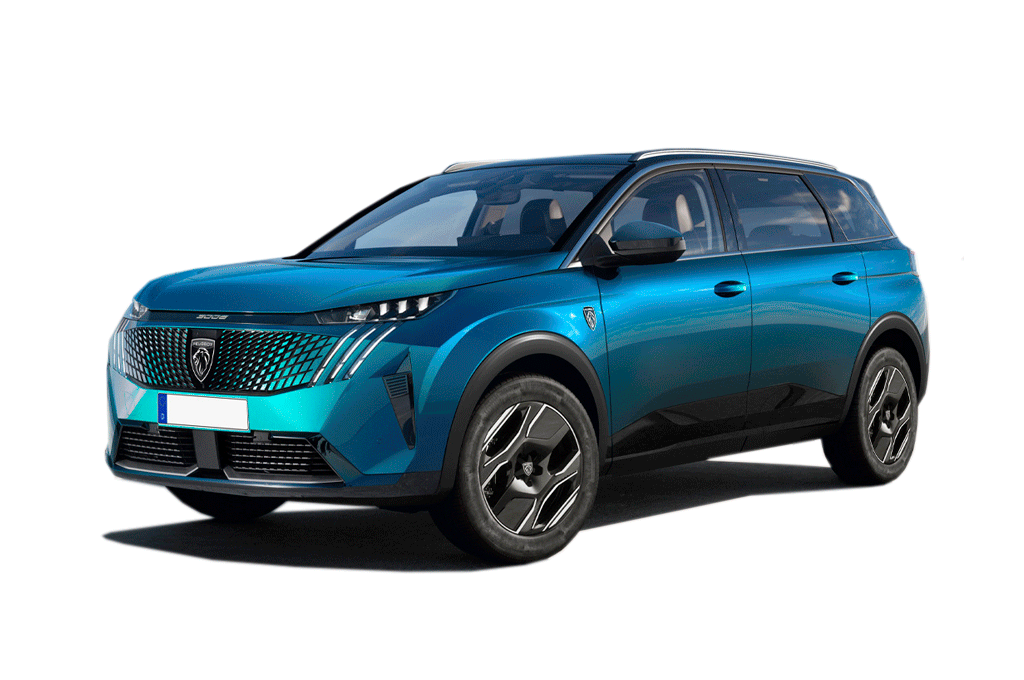
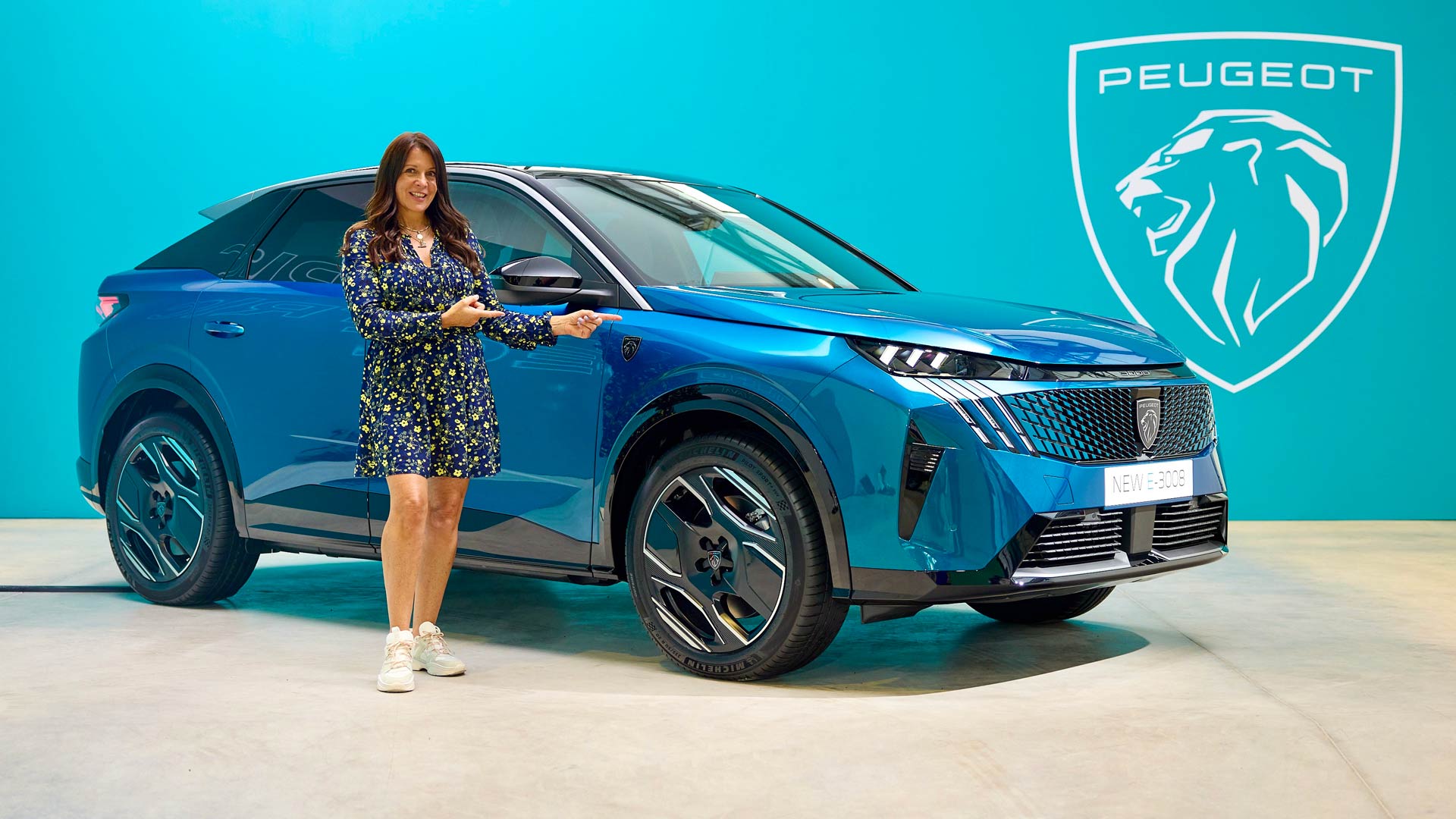
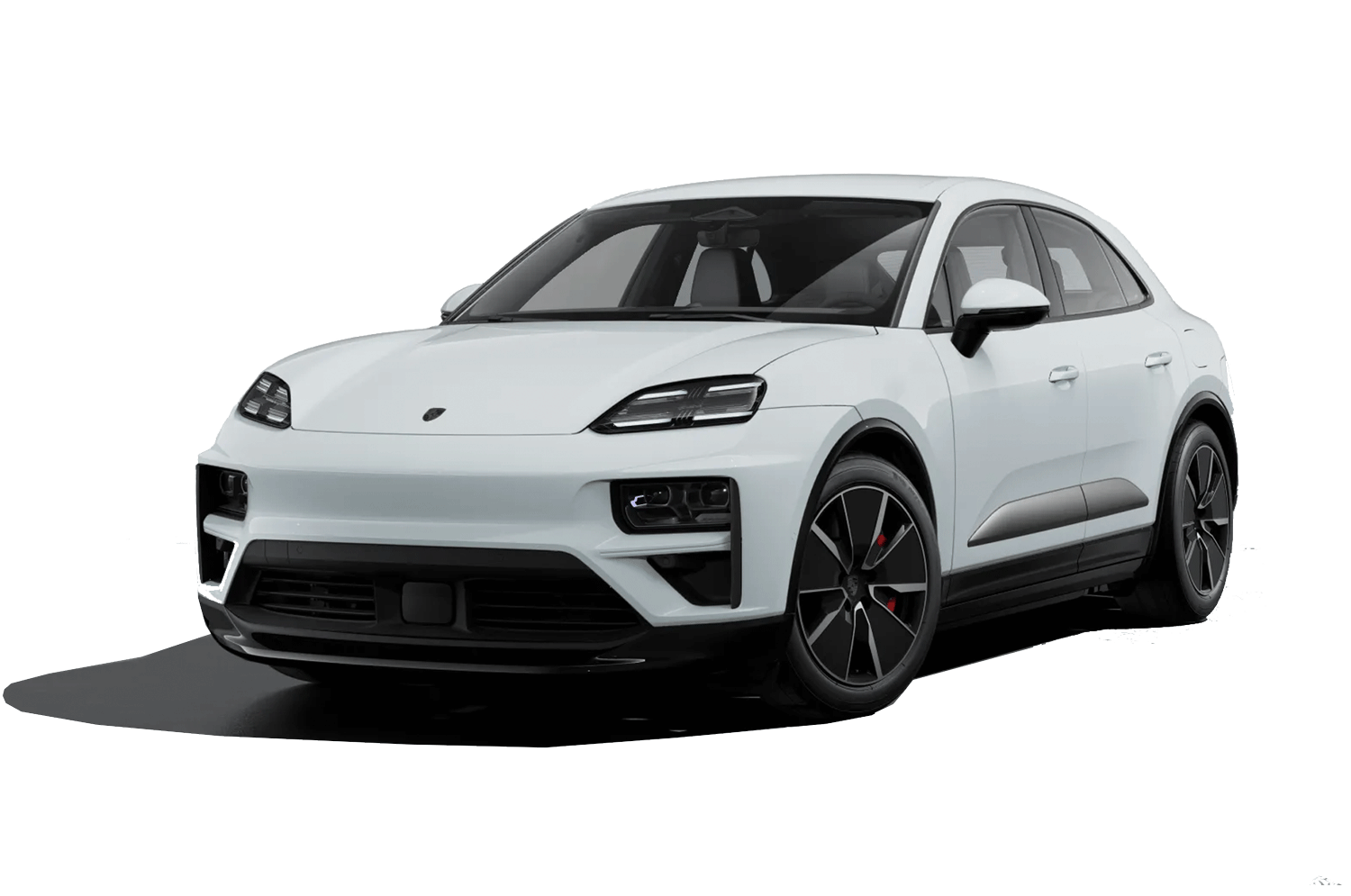
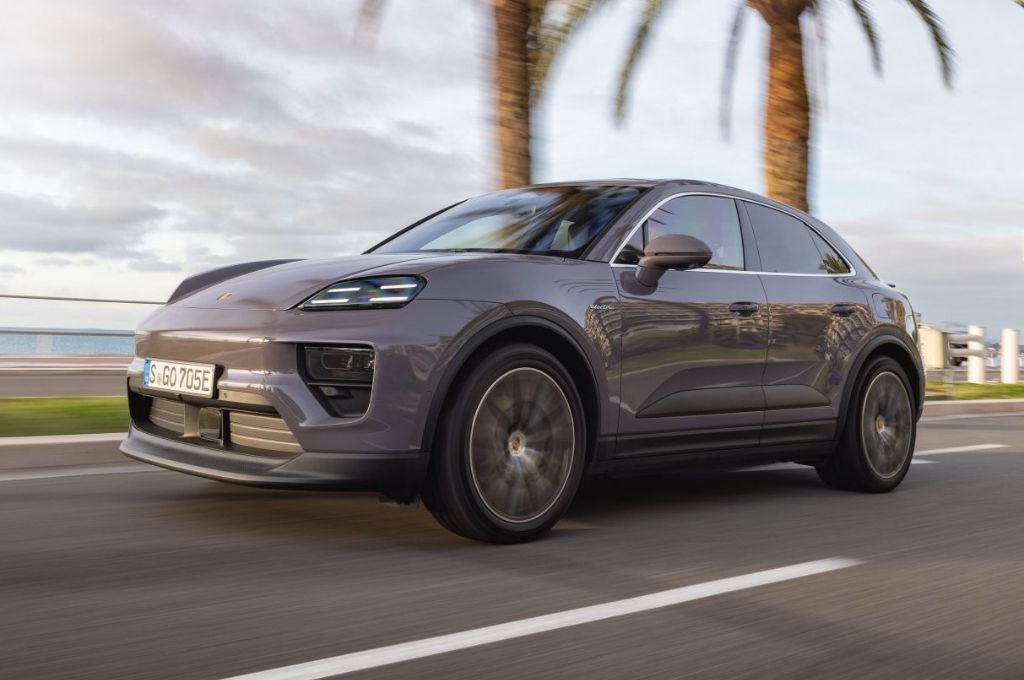
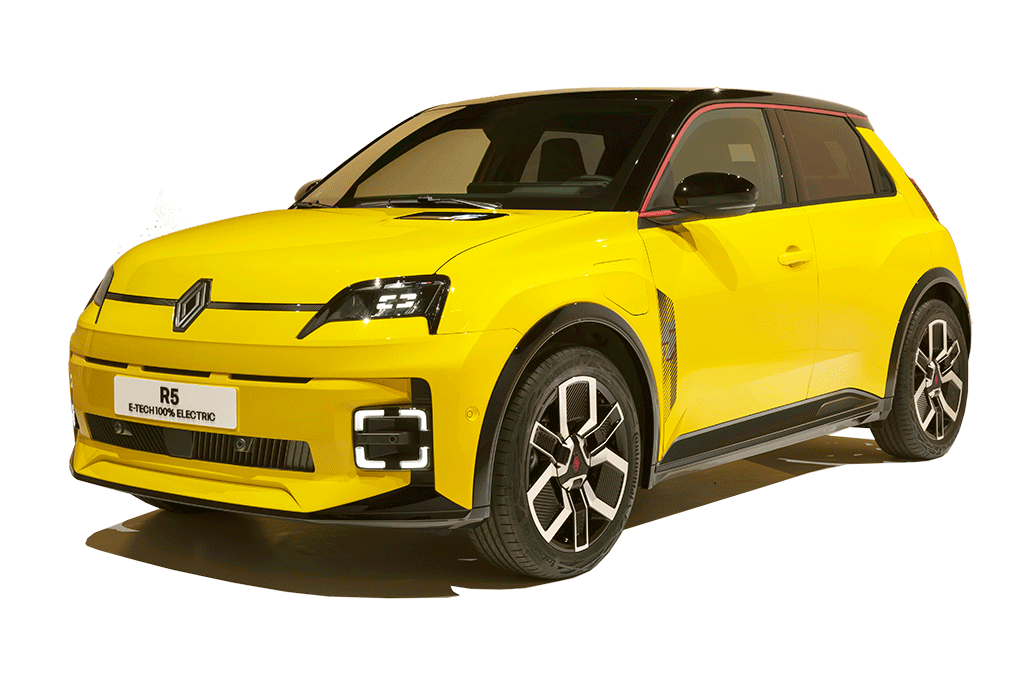
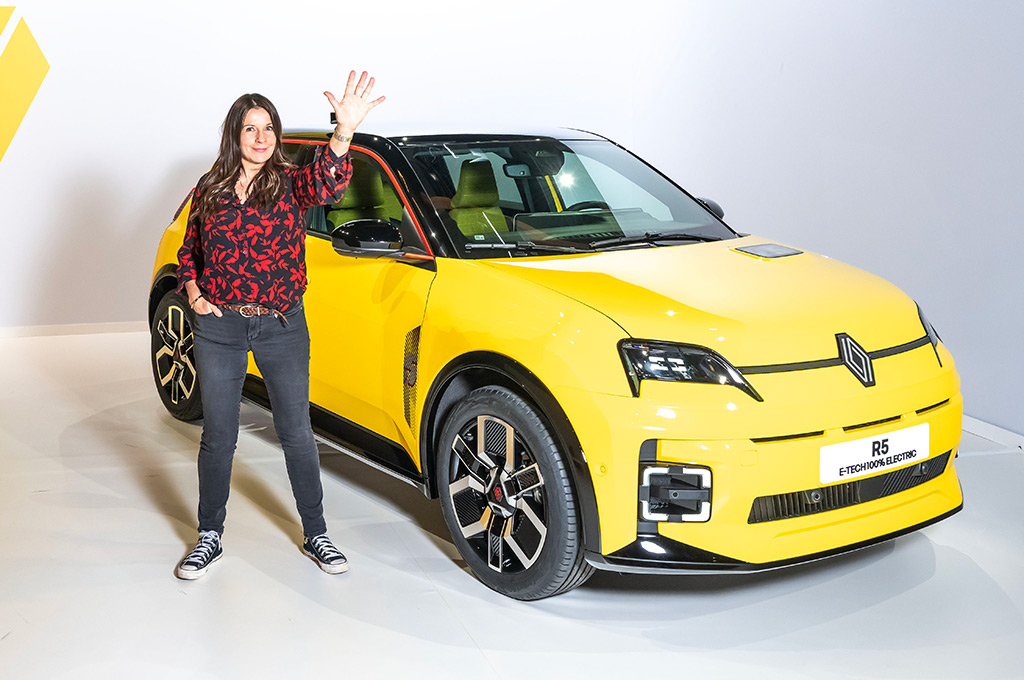
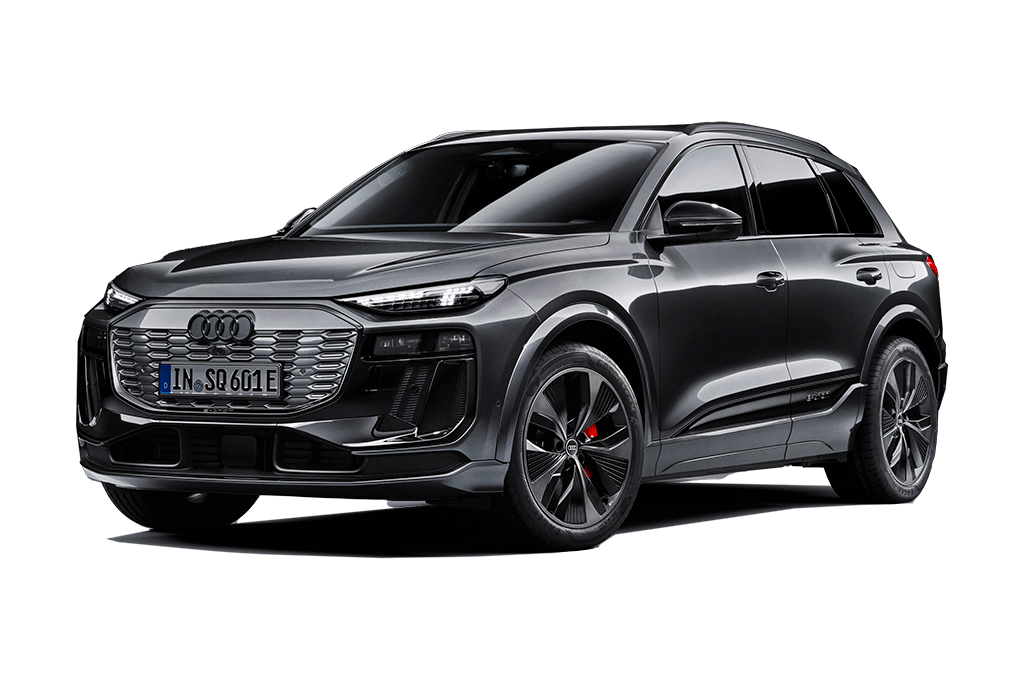
.jpg)
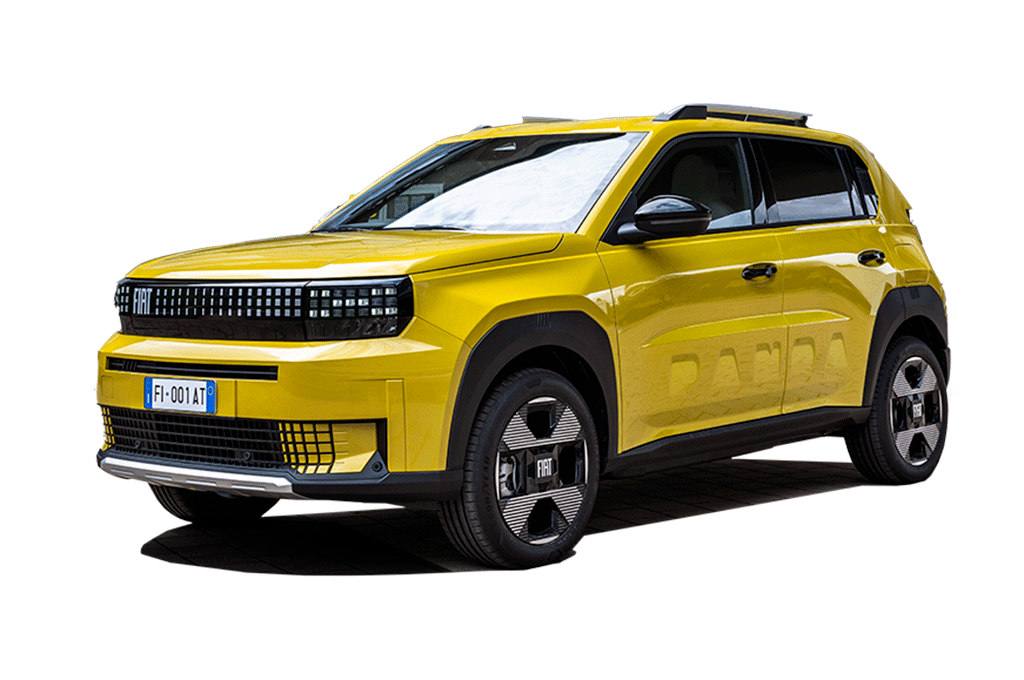.png)
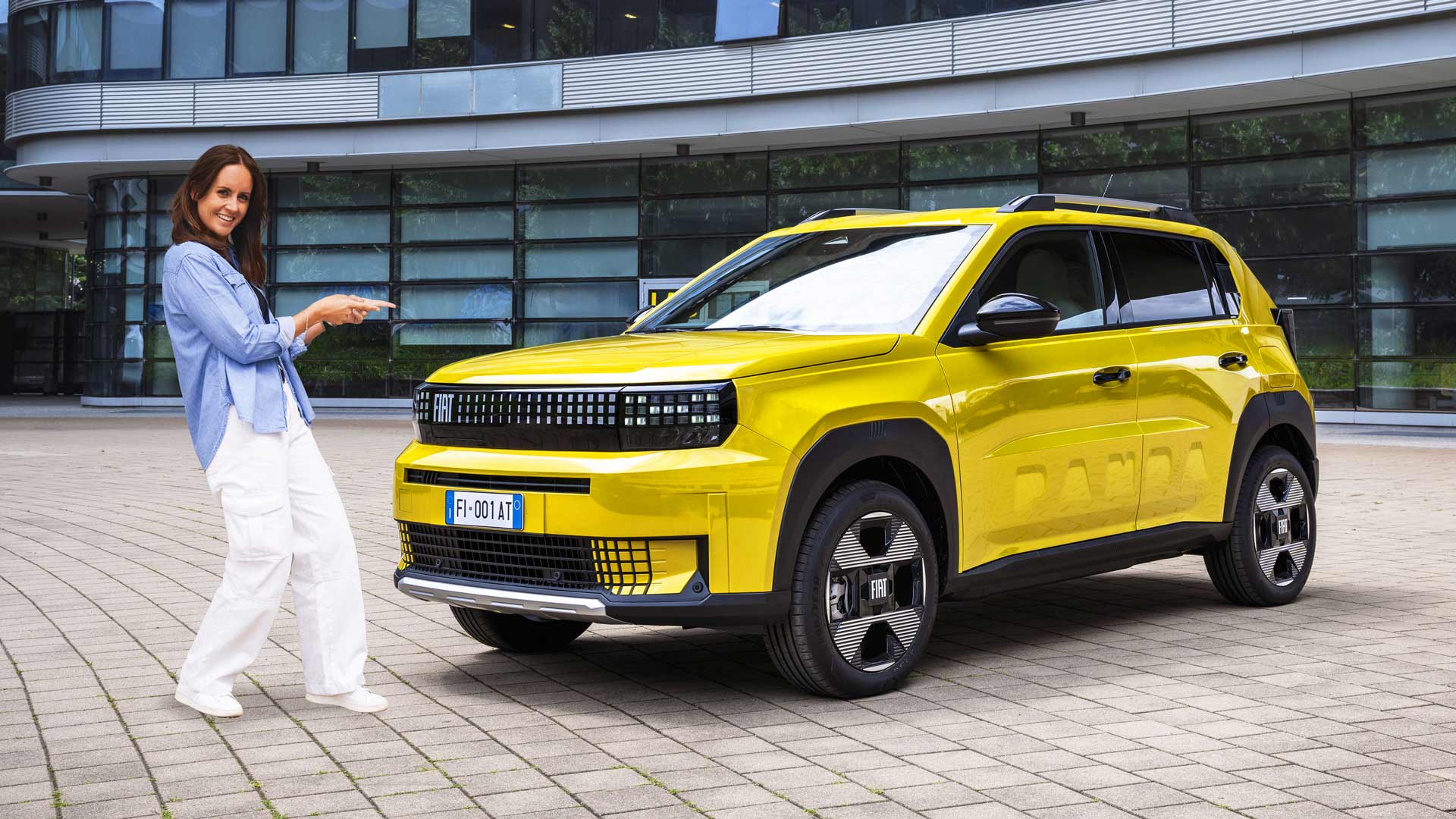
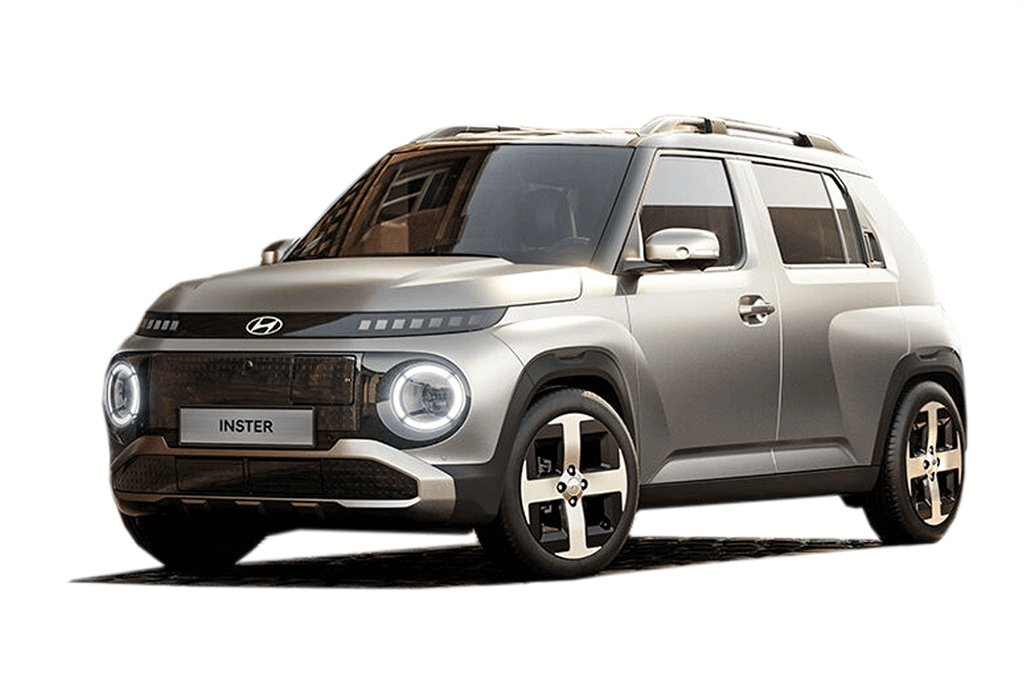
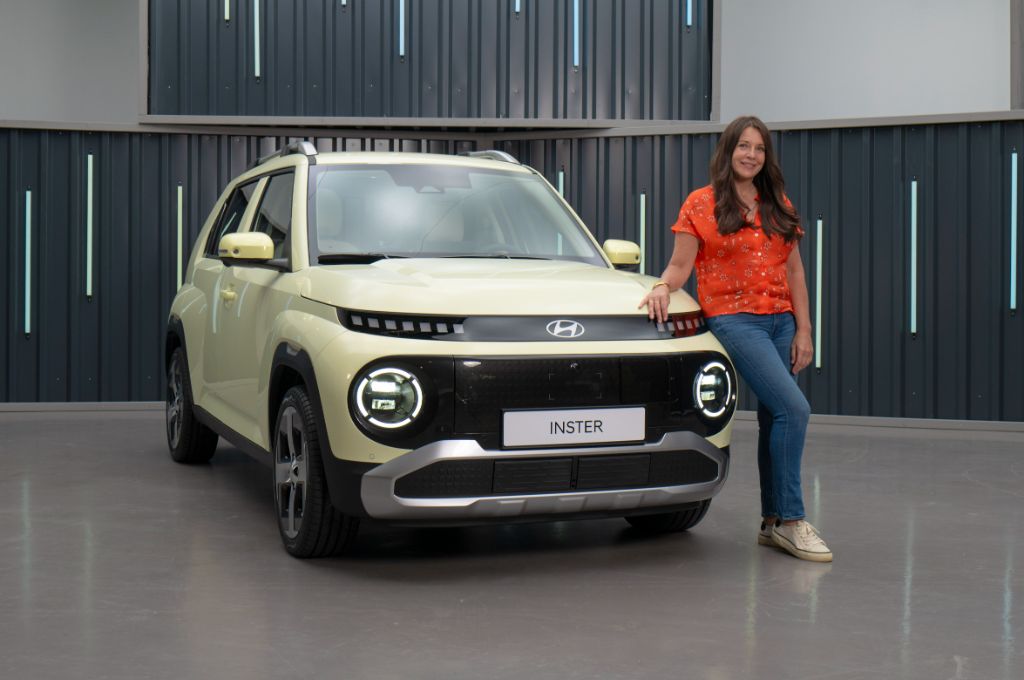
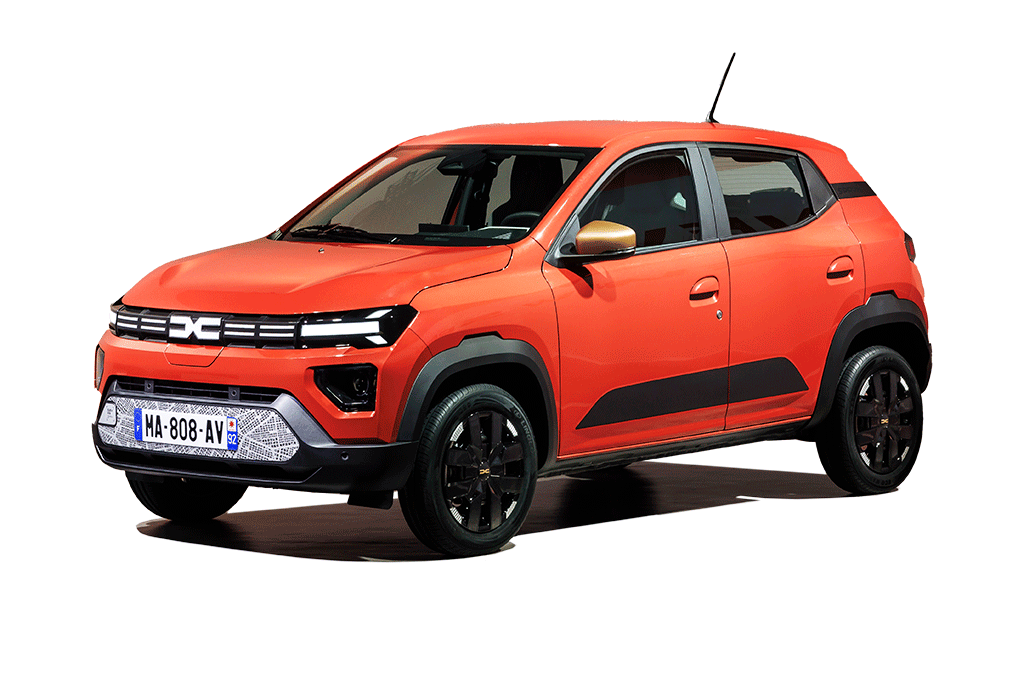

.jpg)
